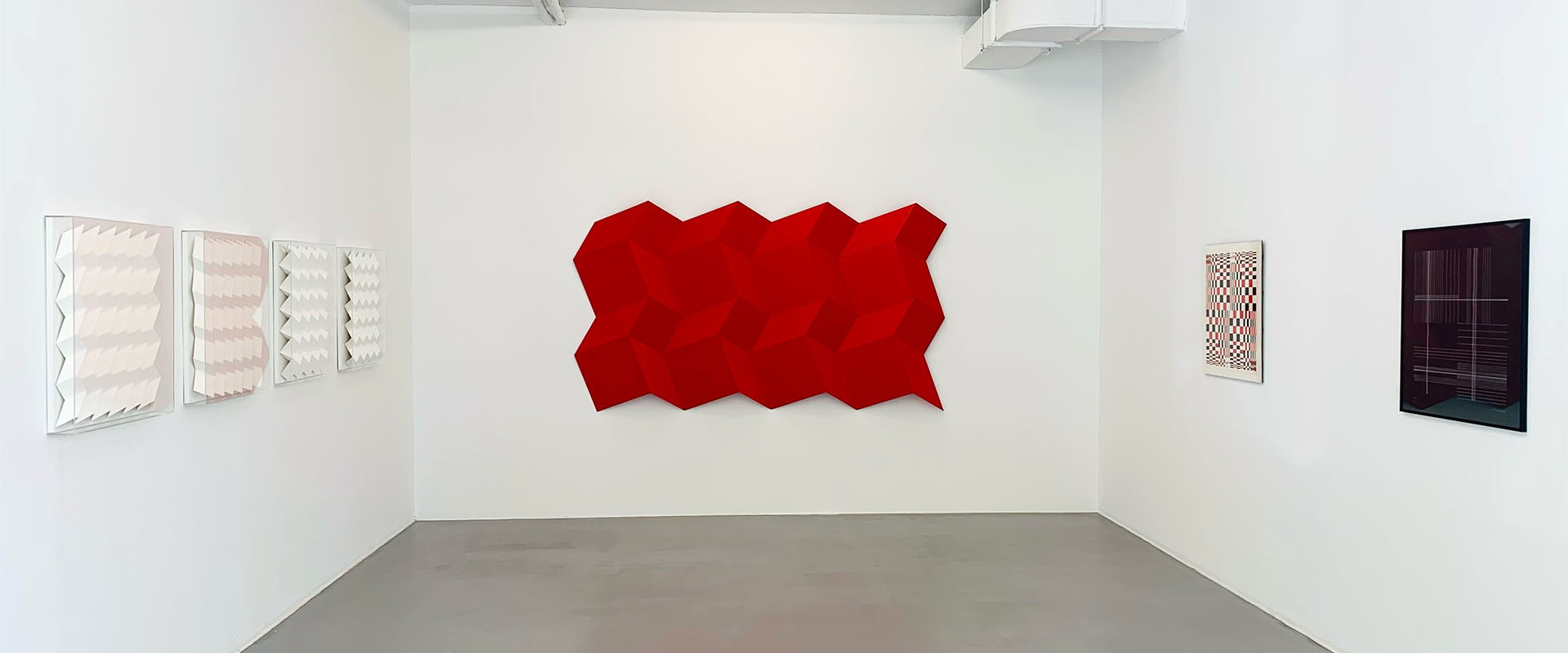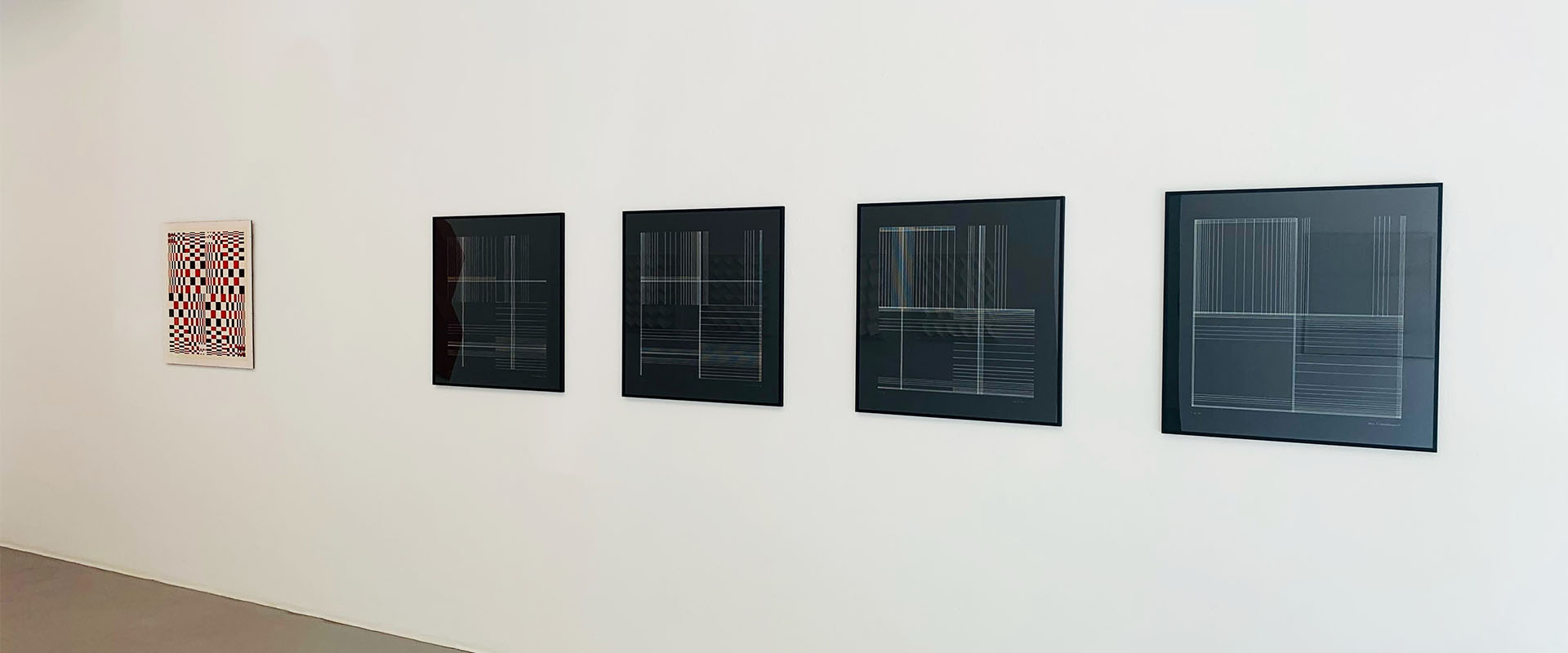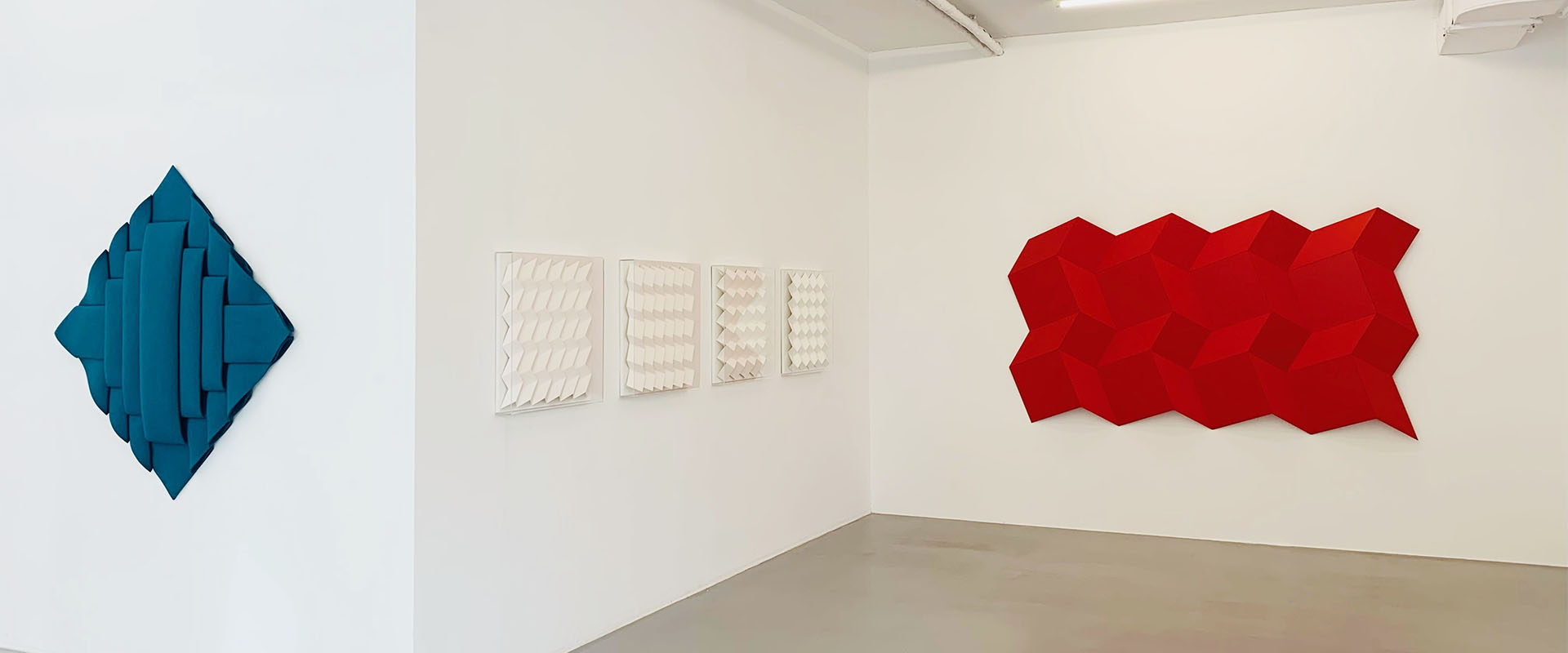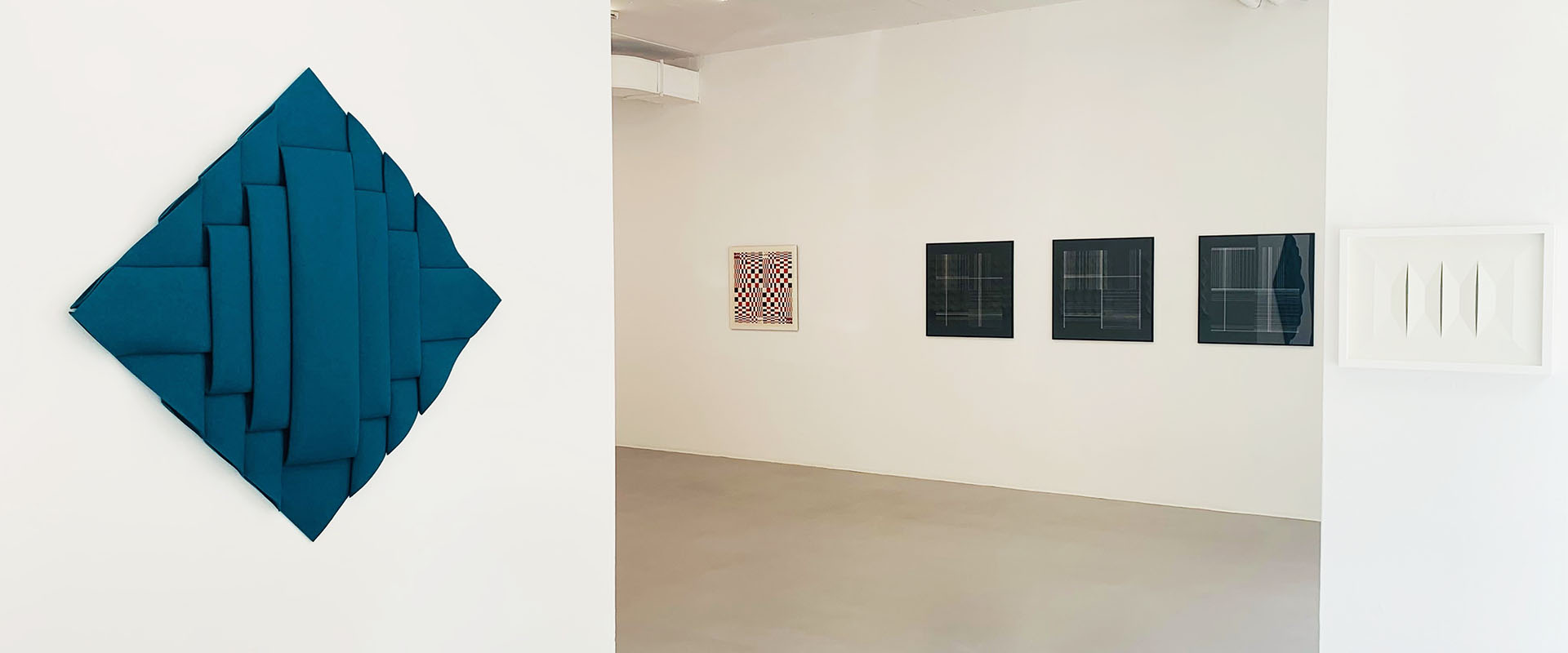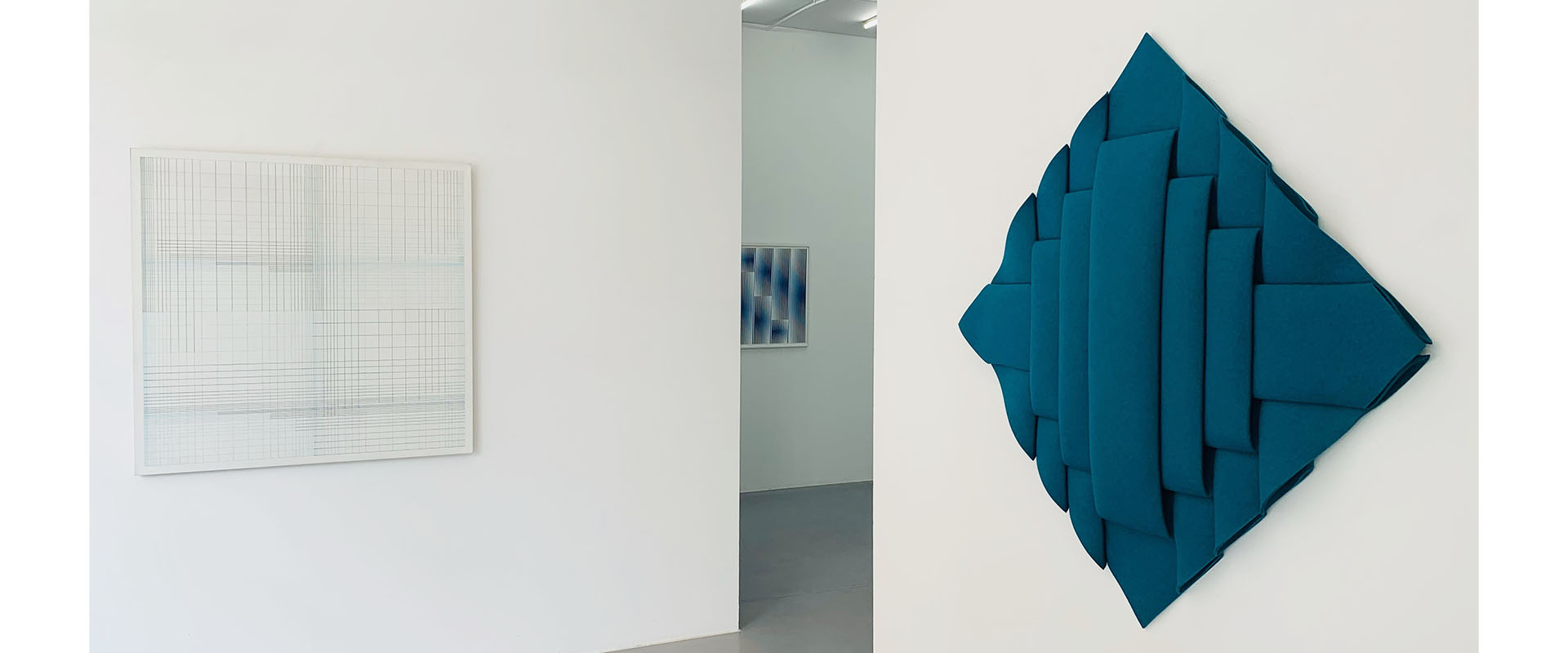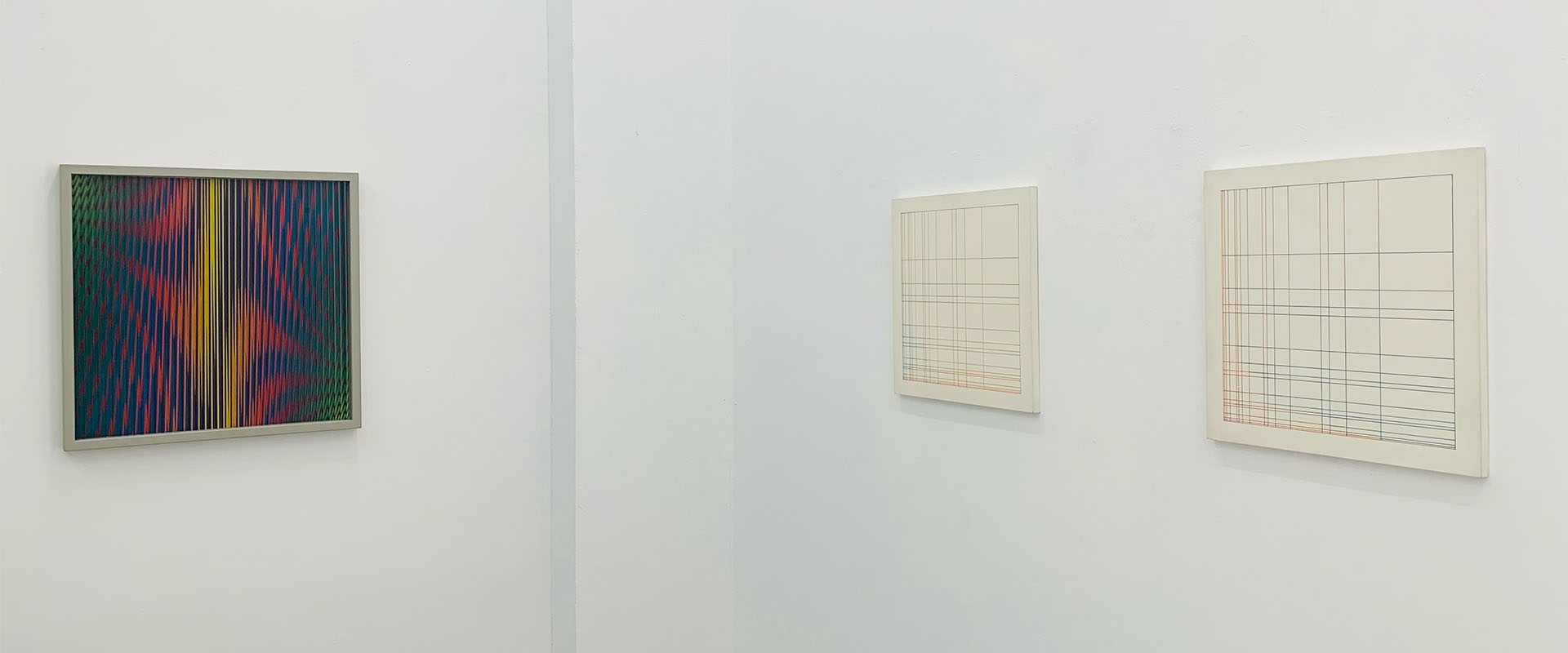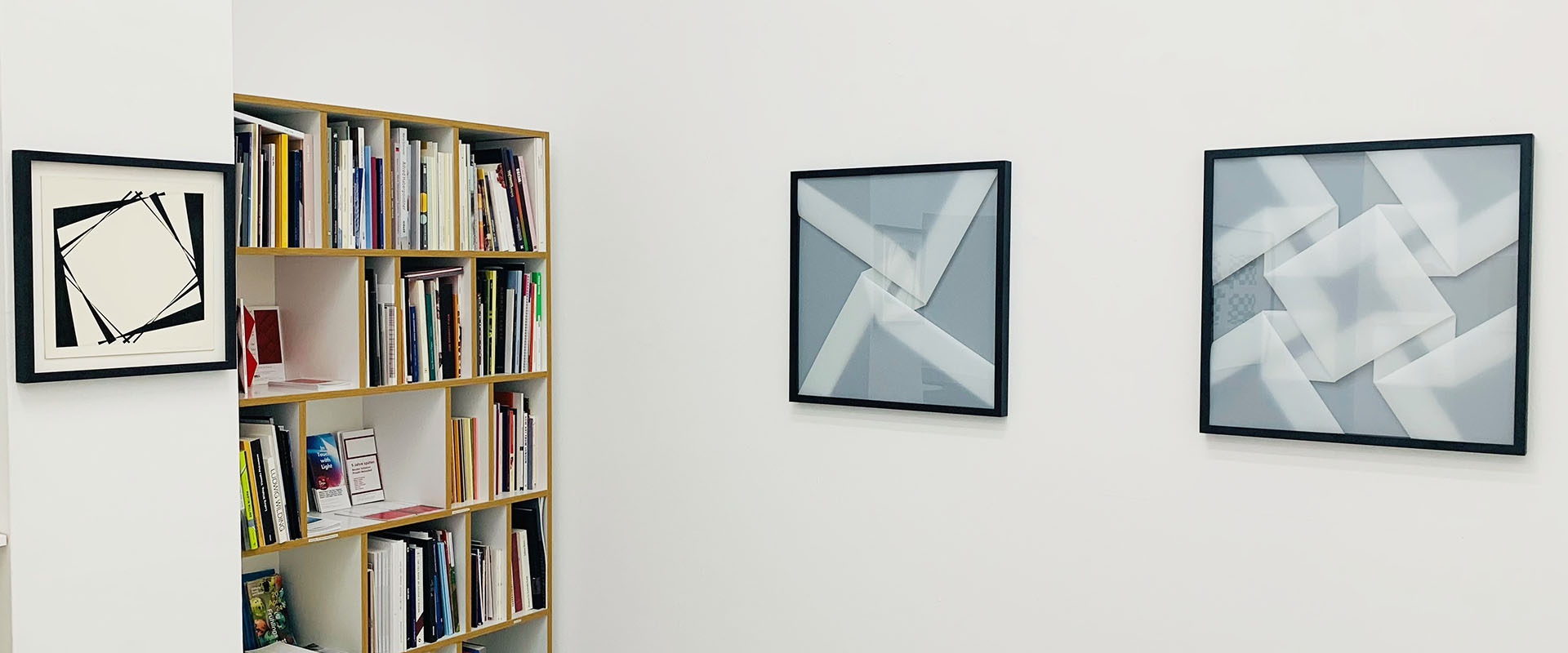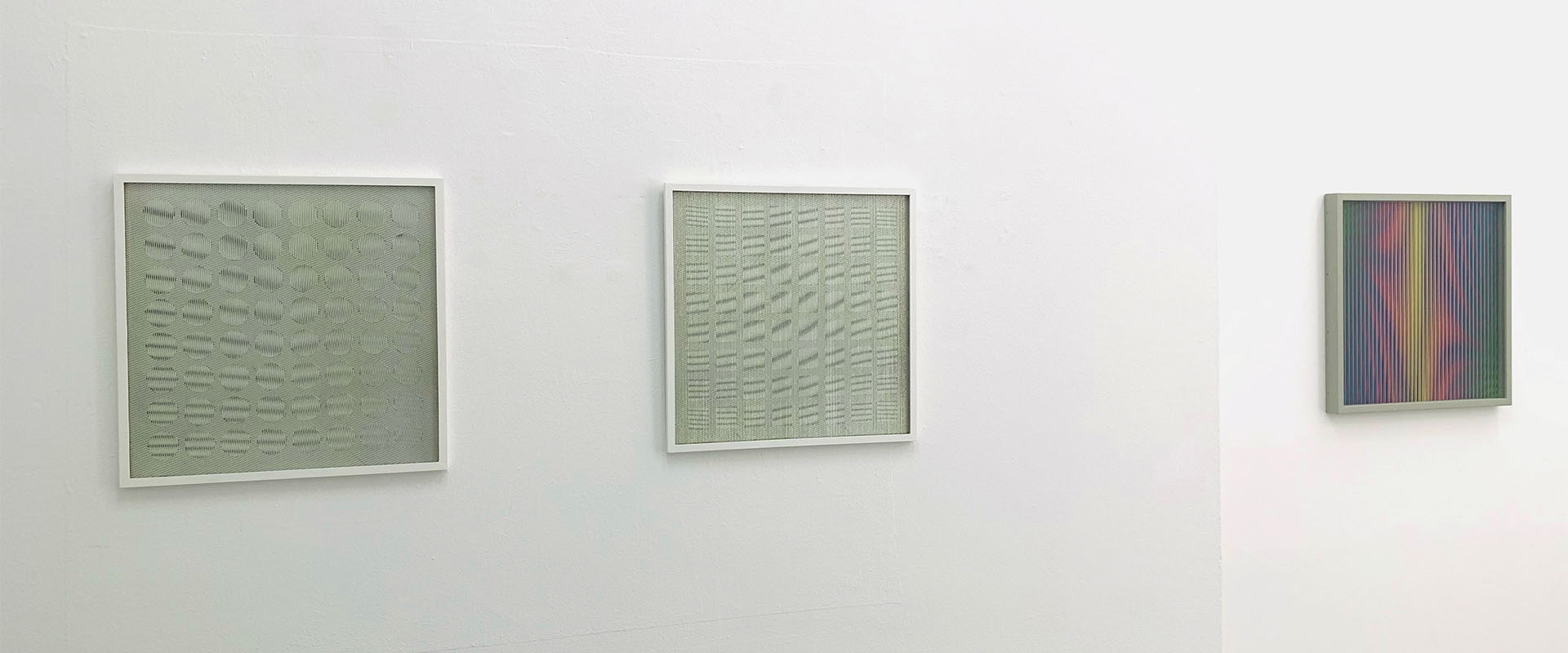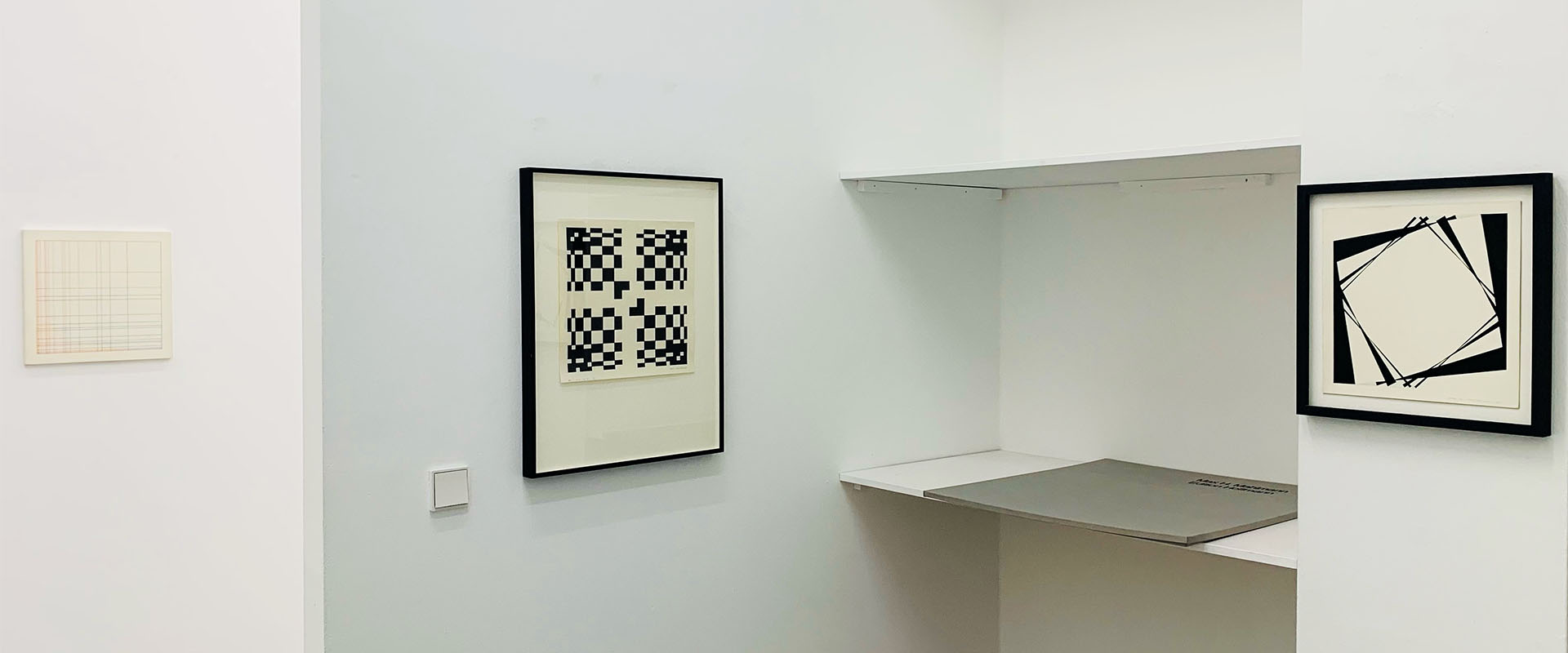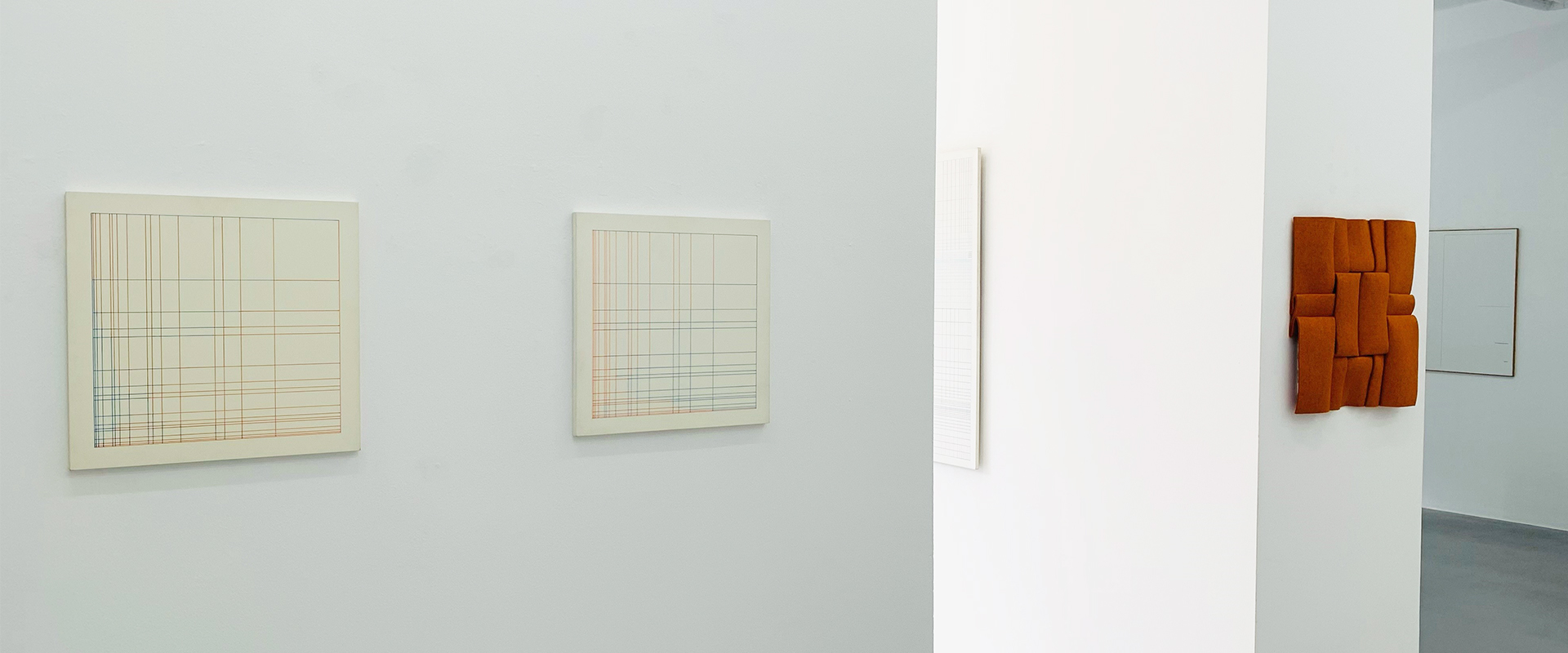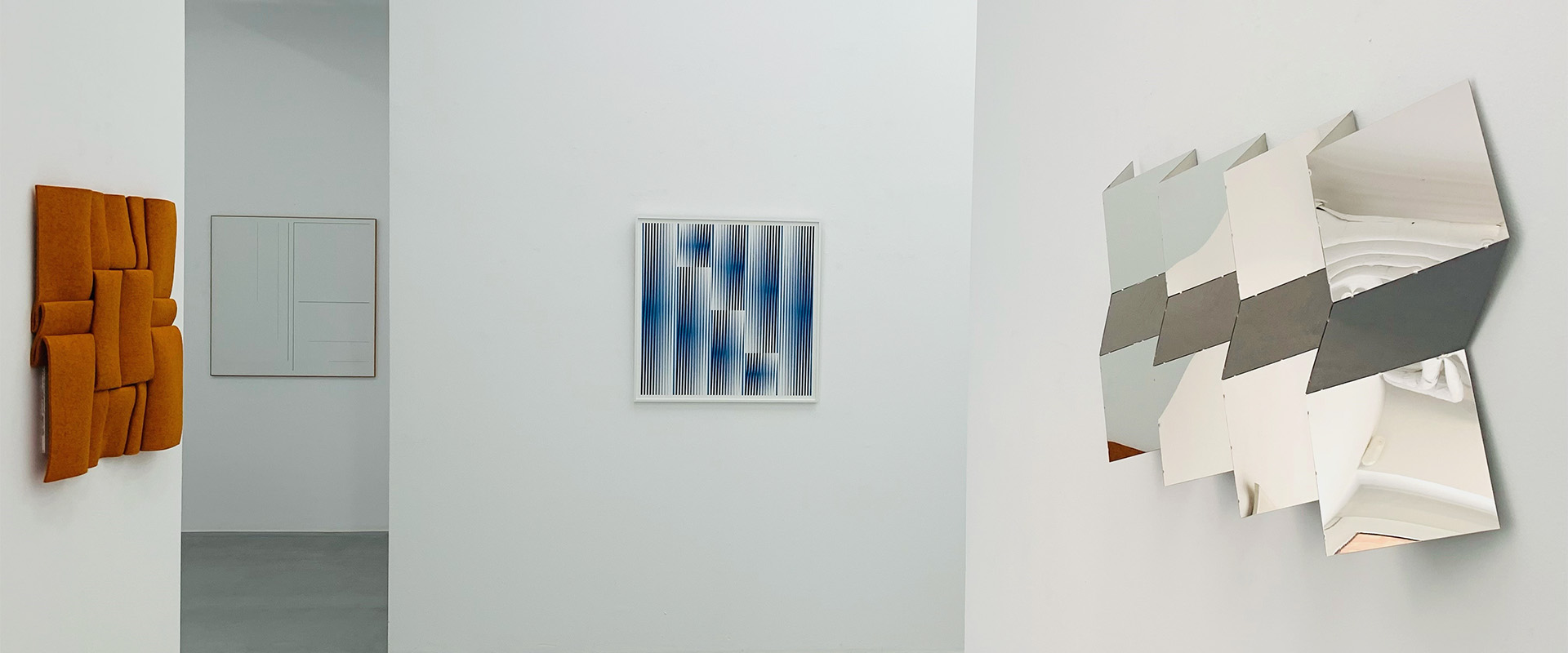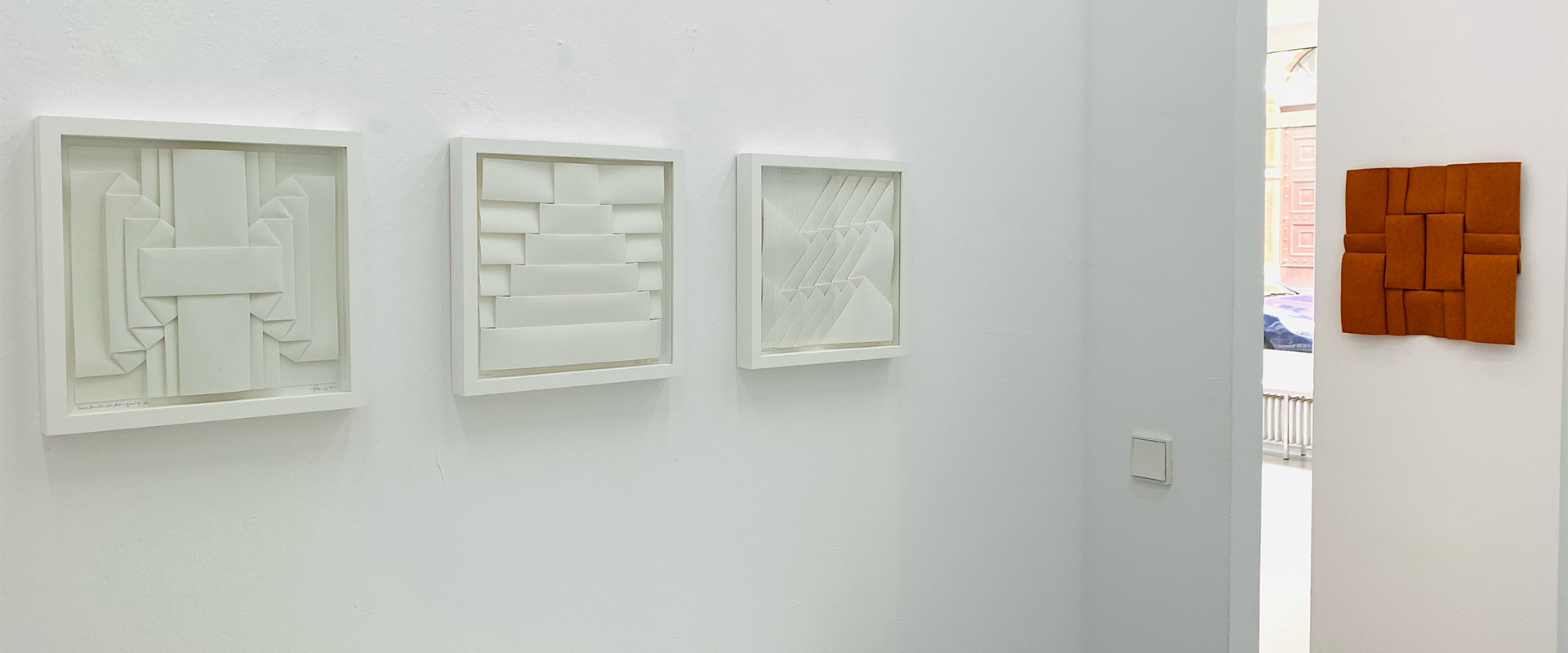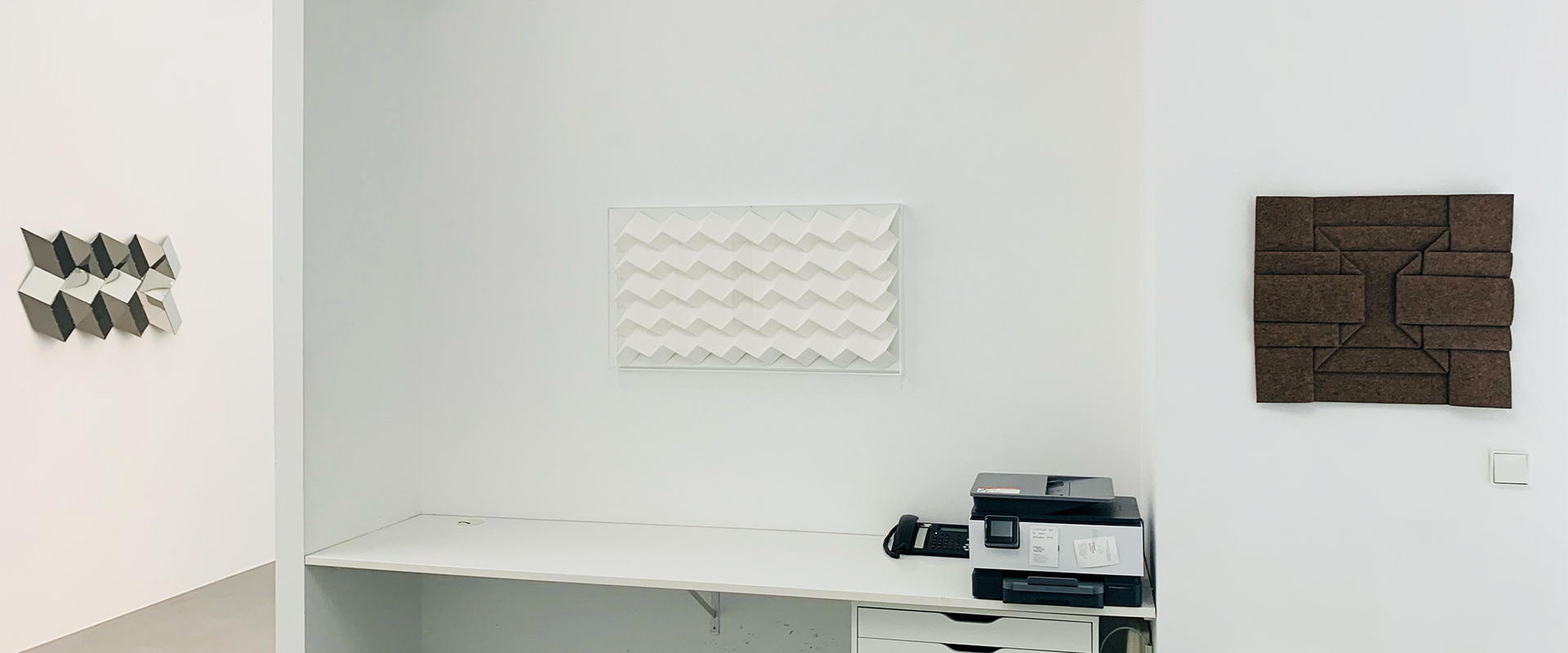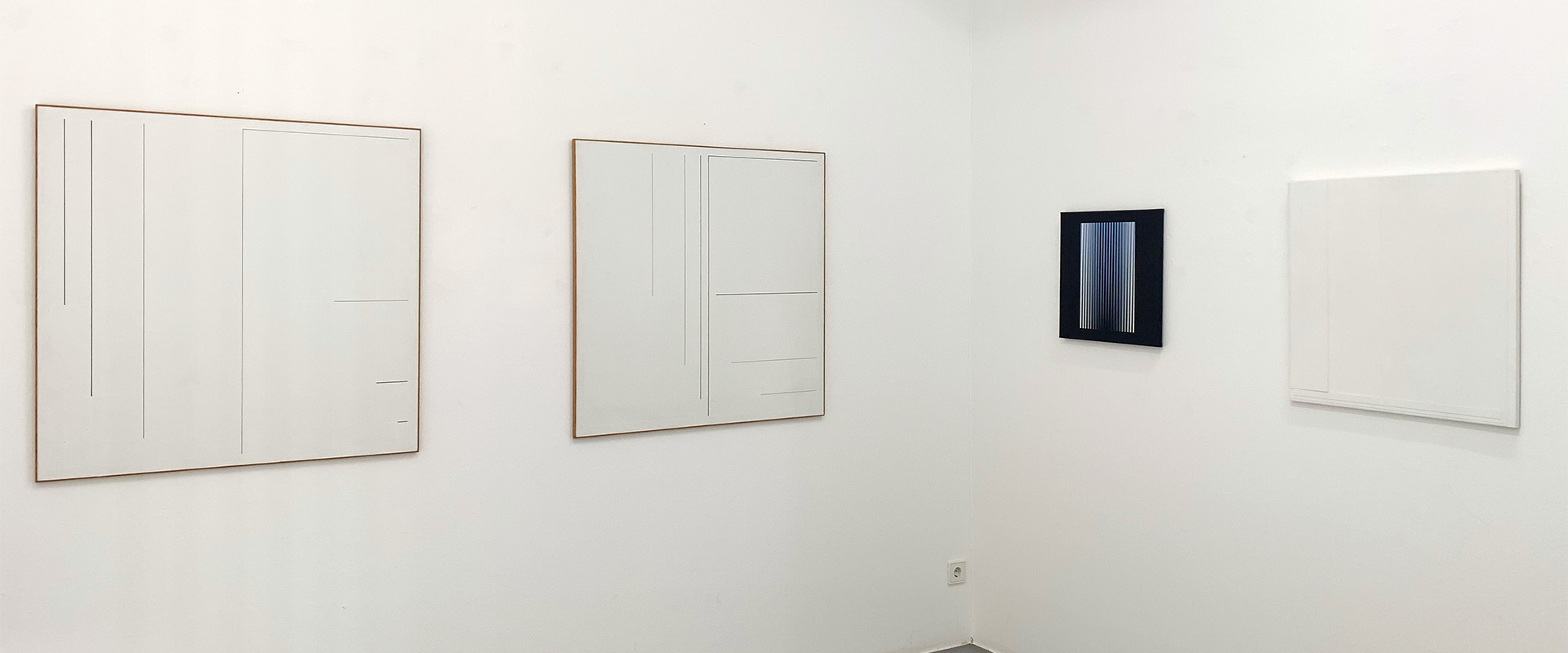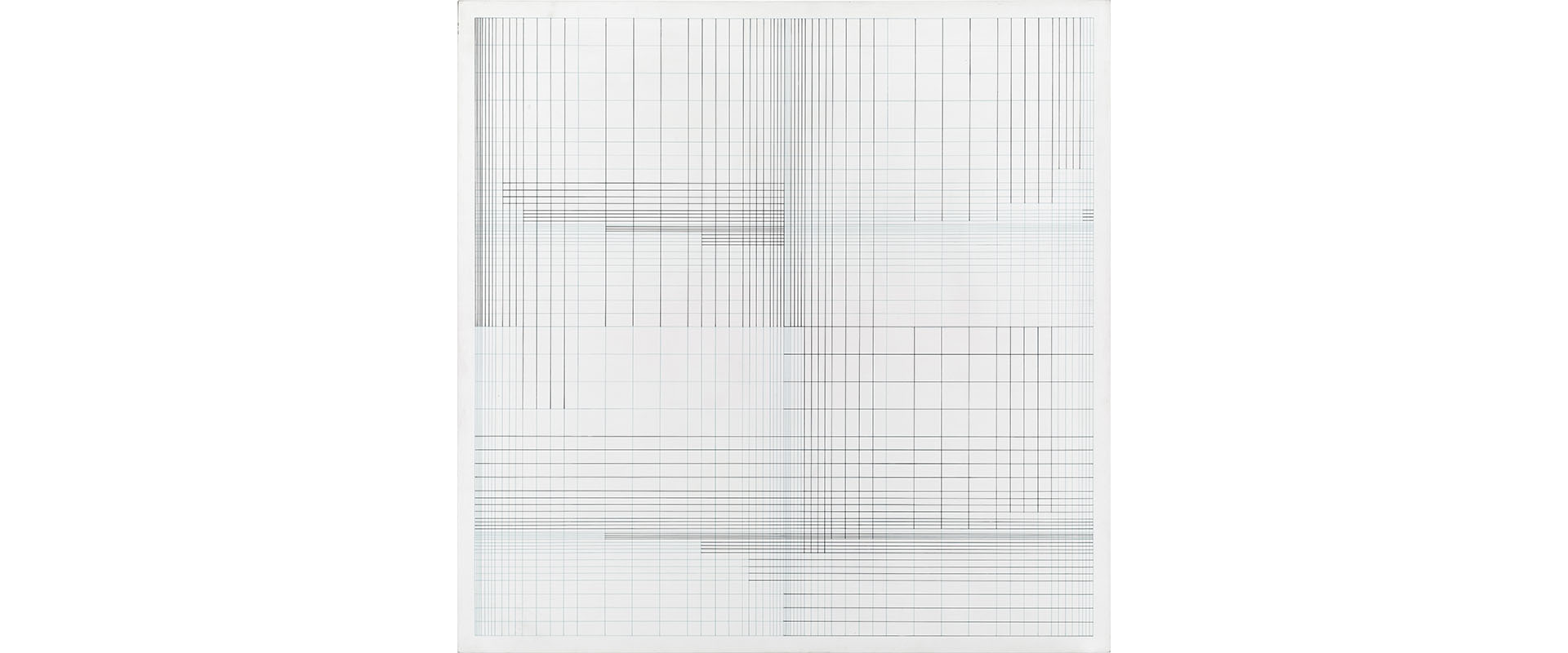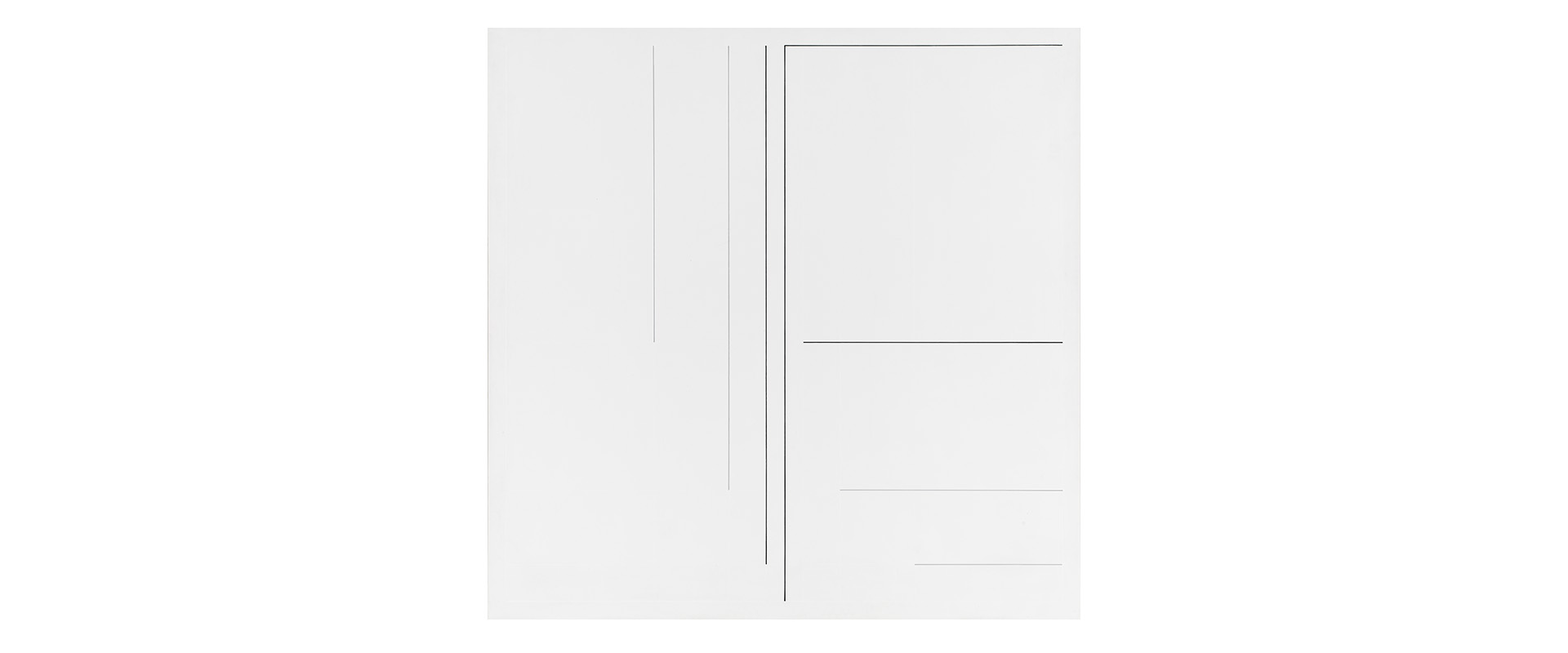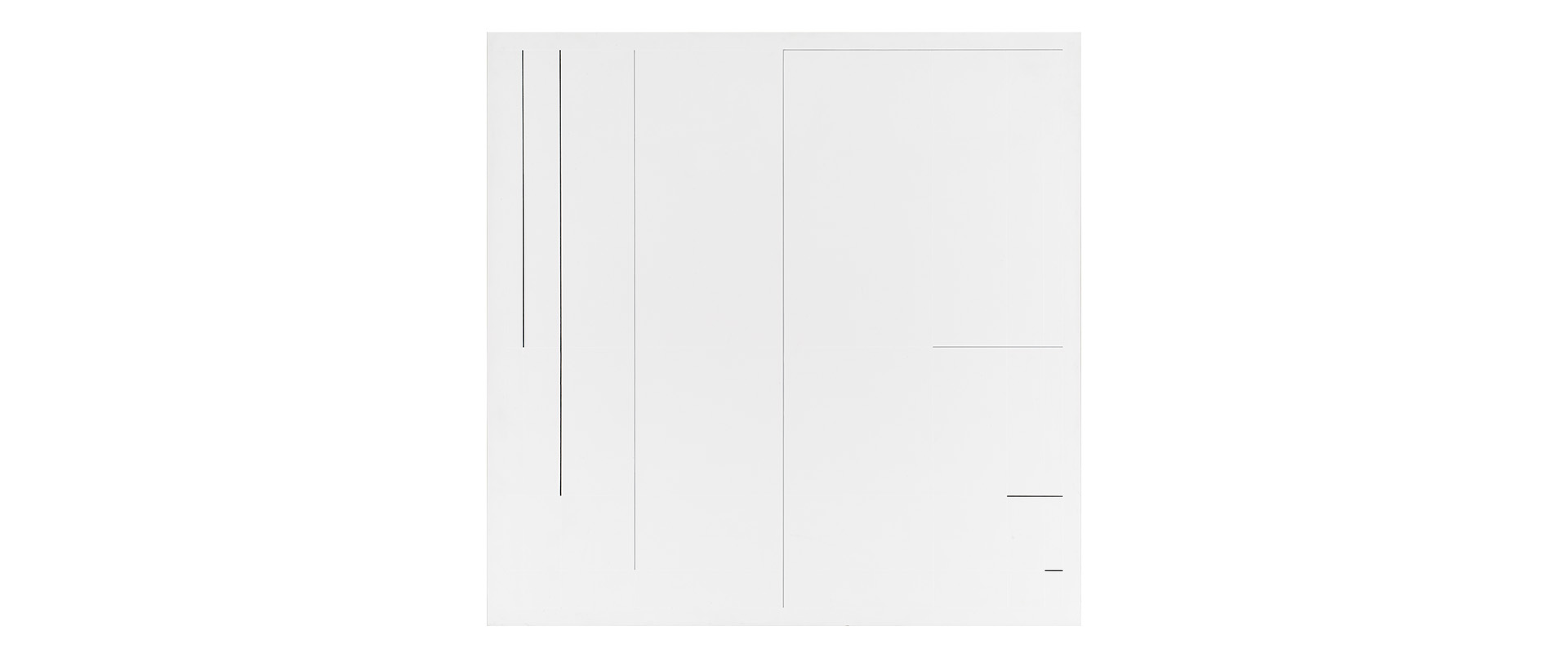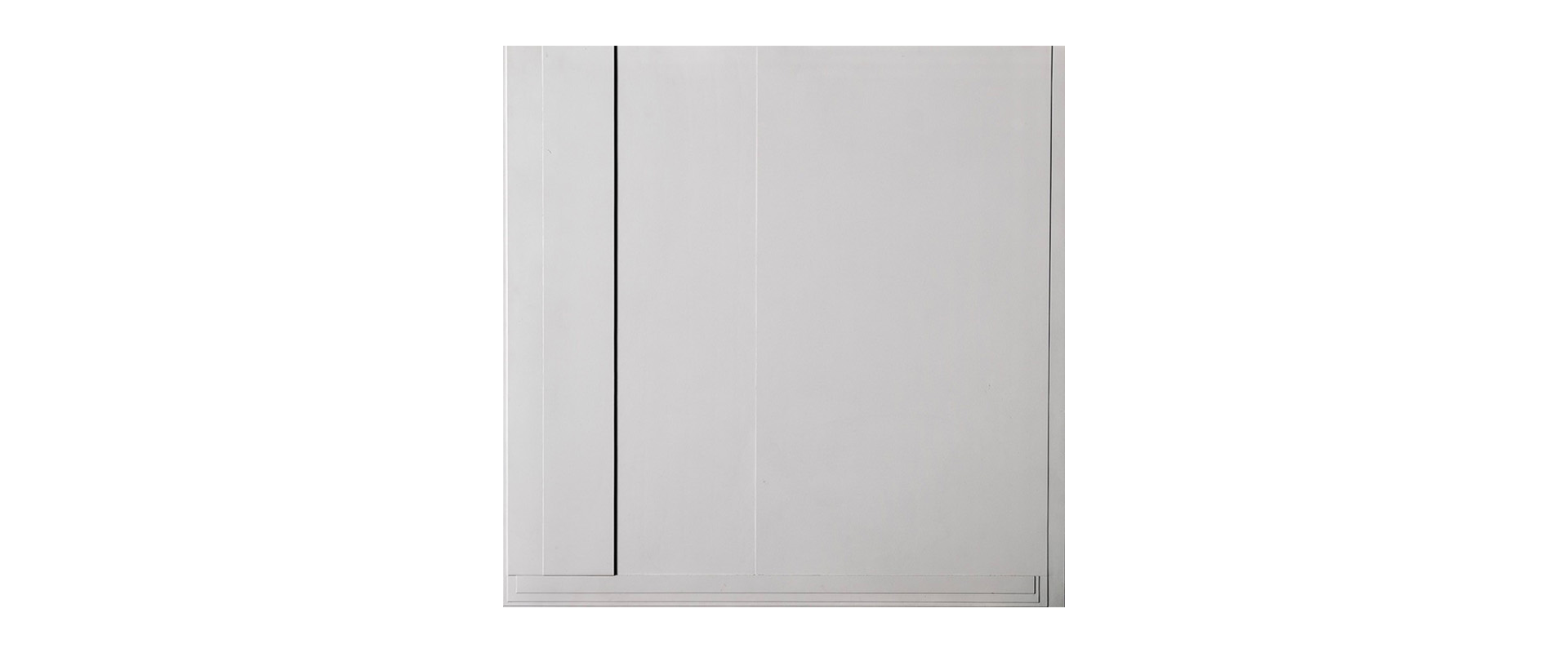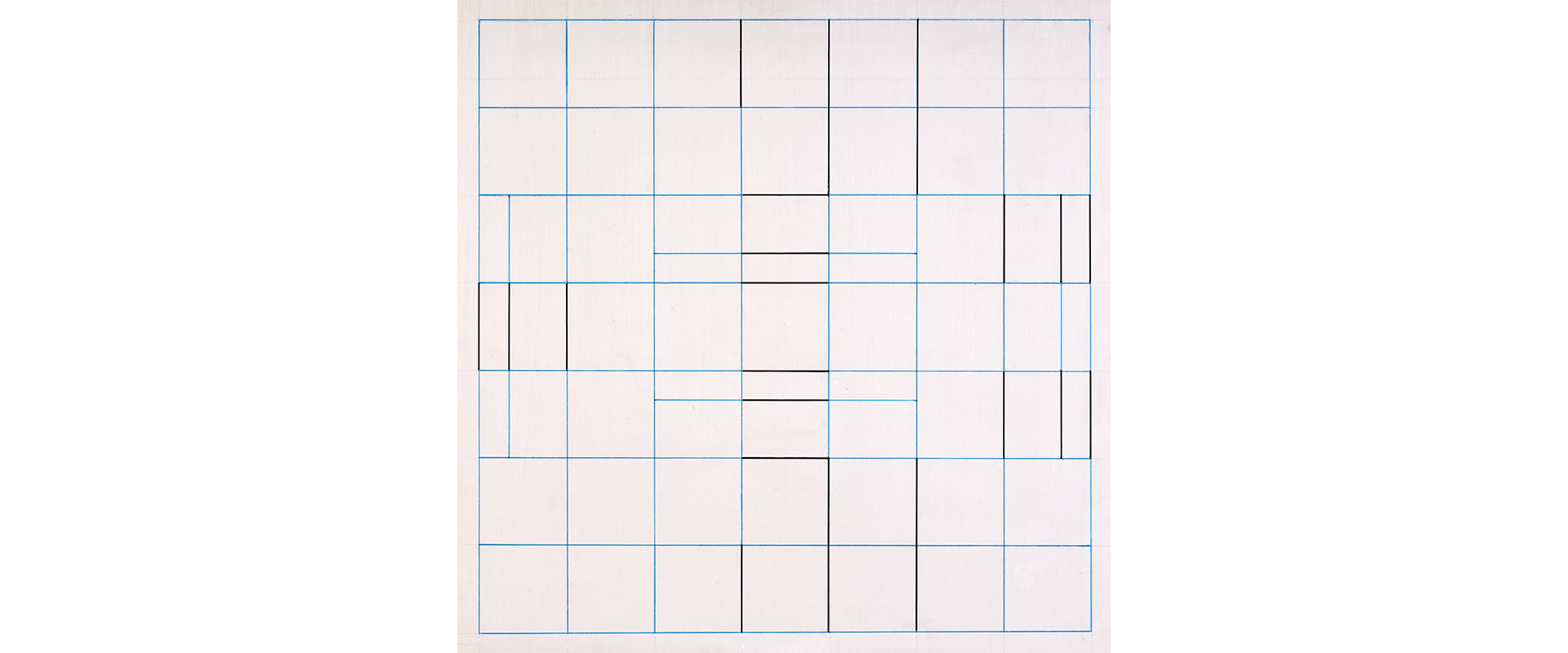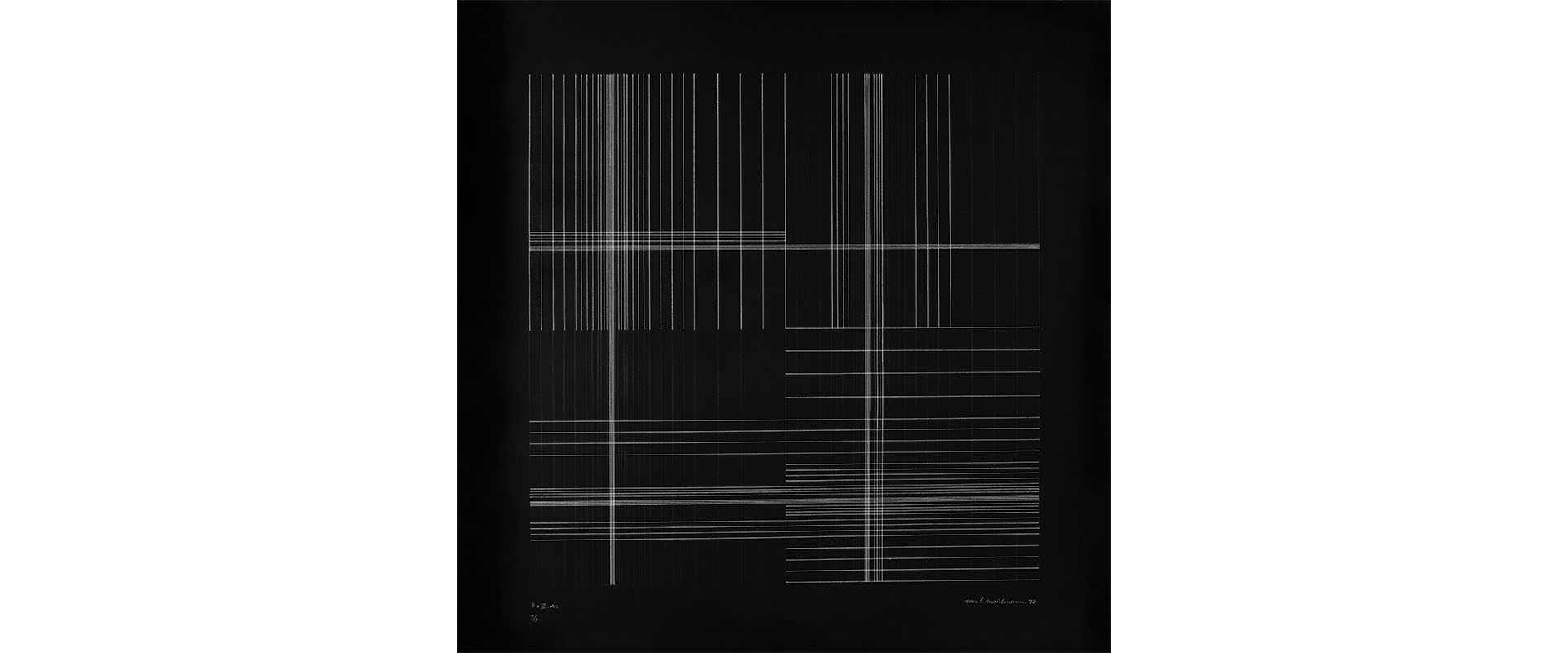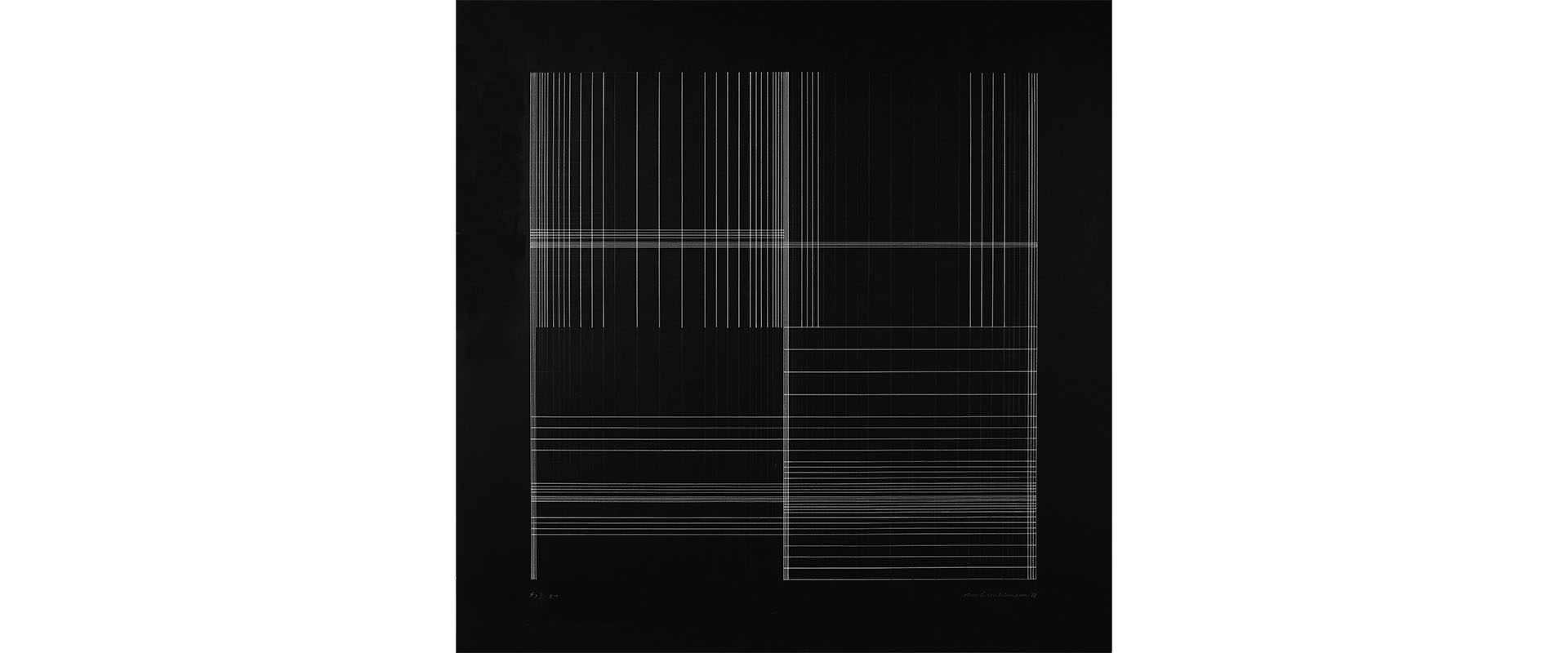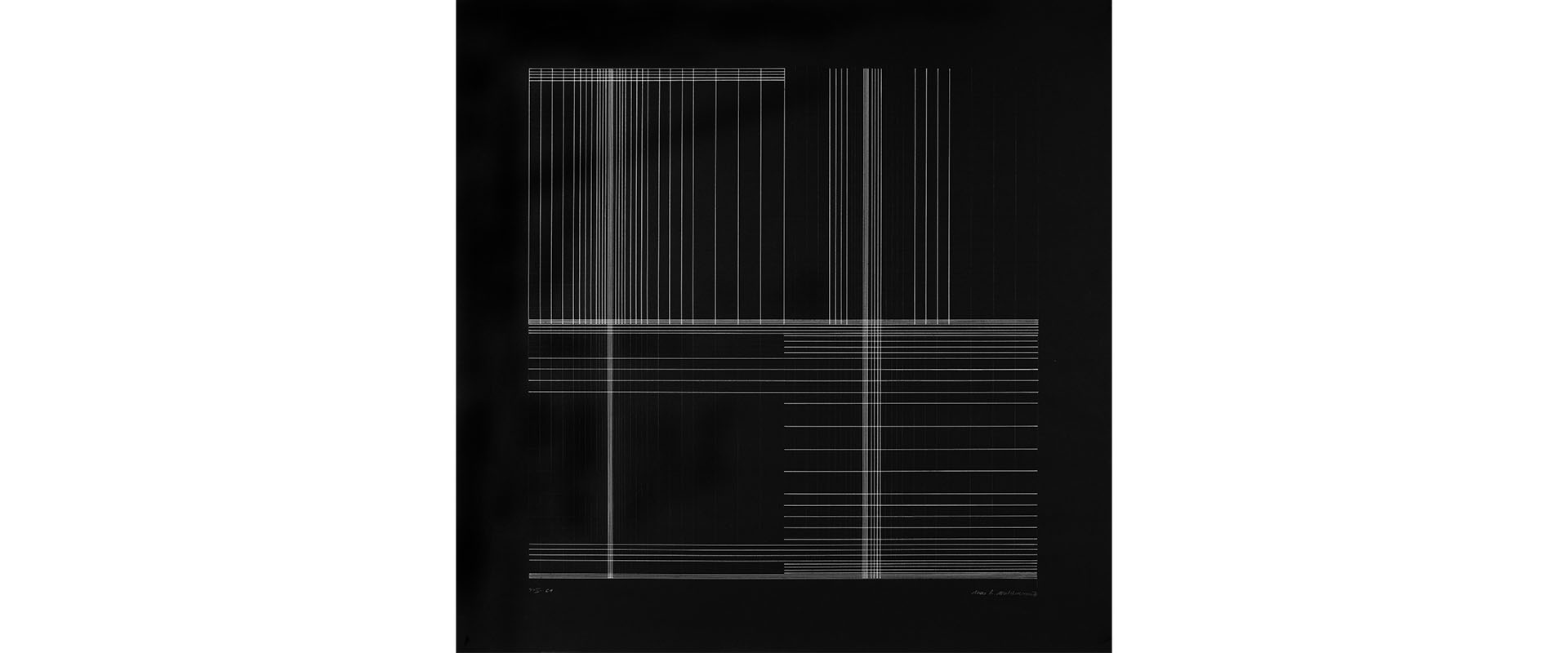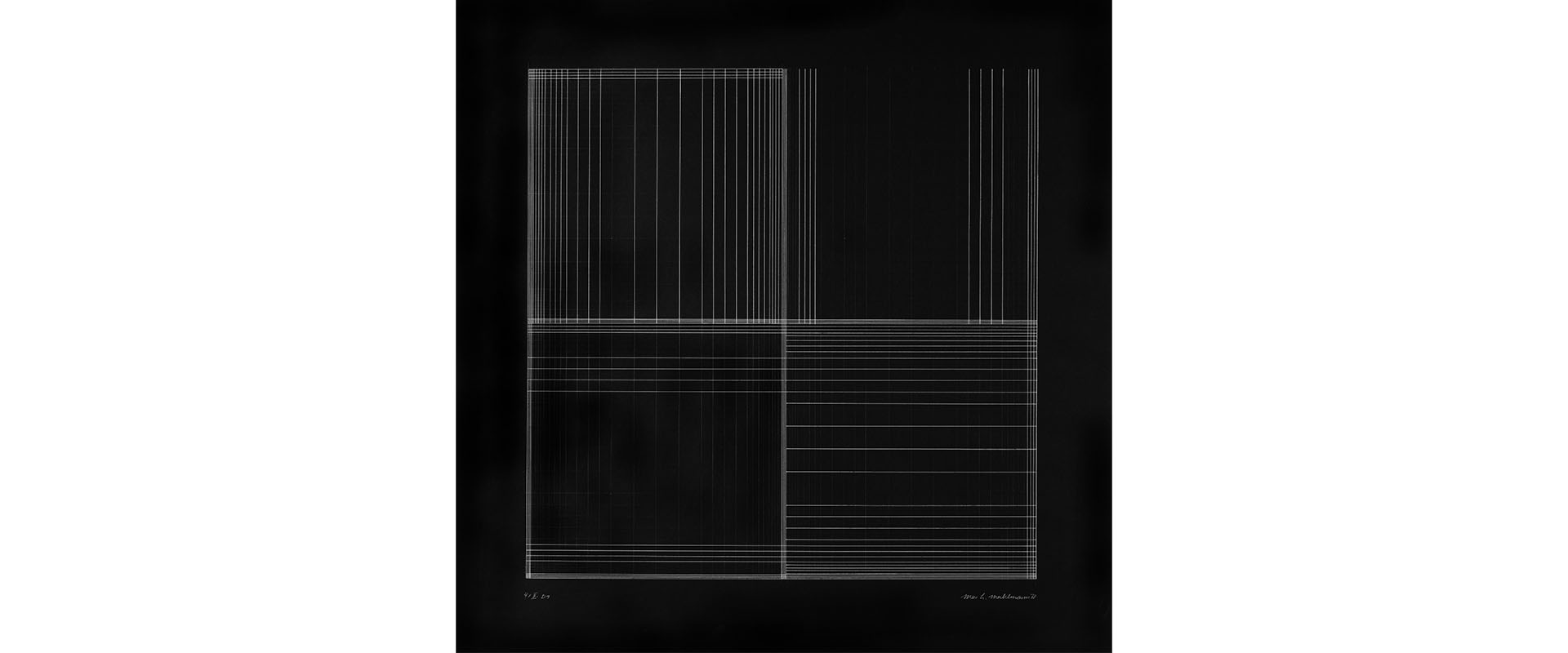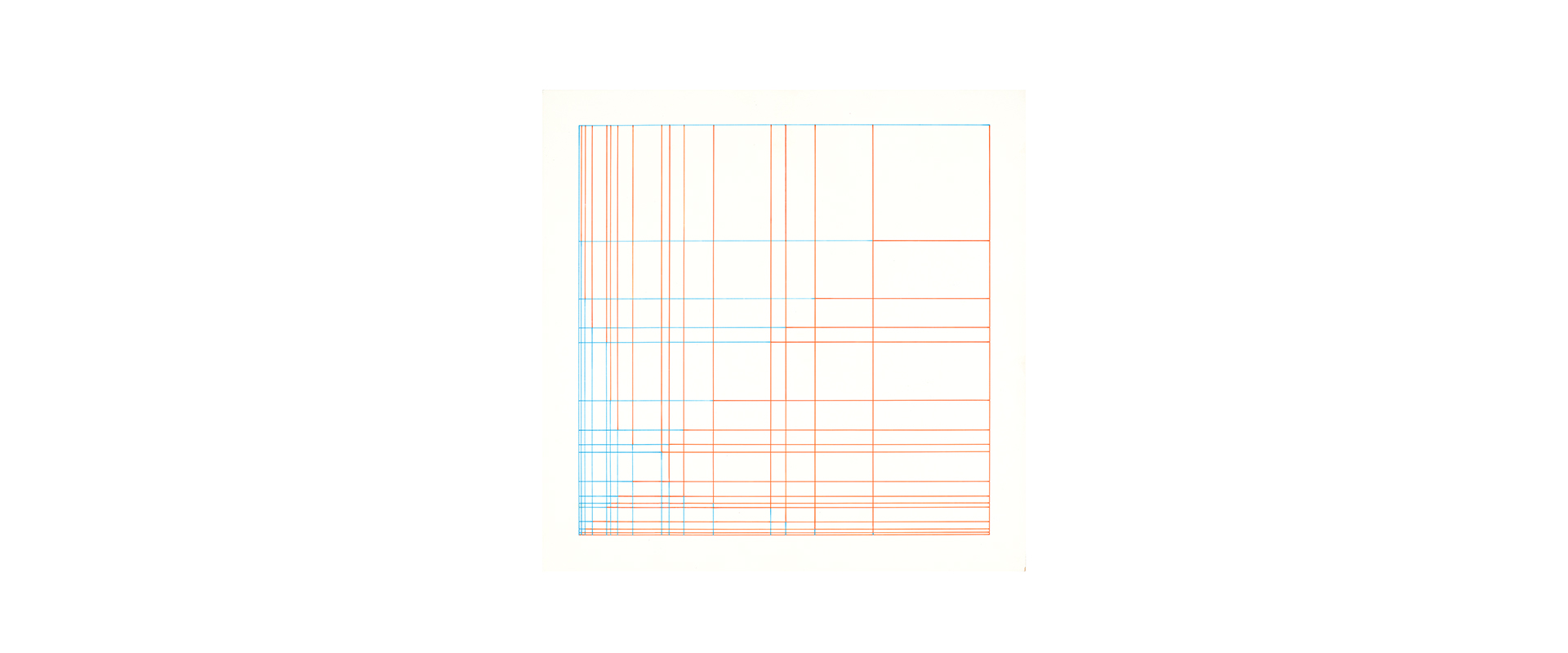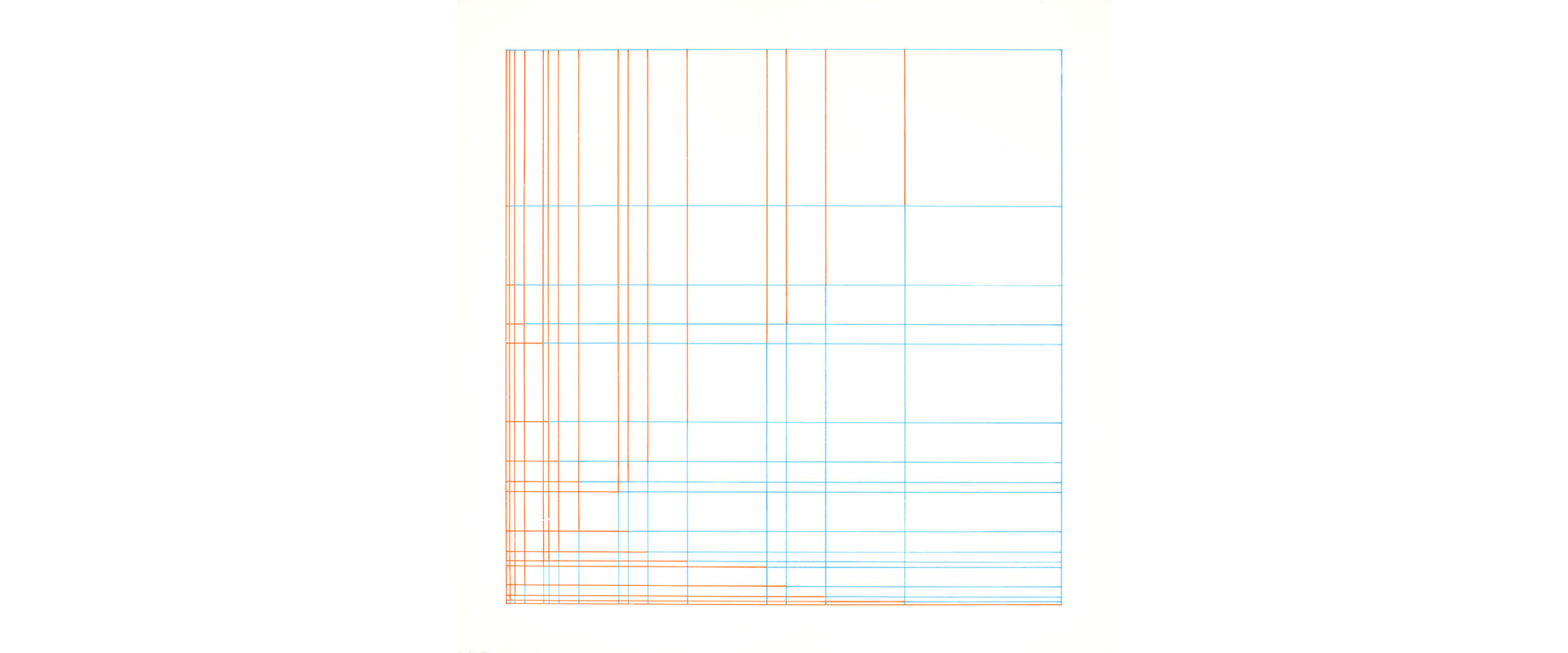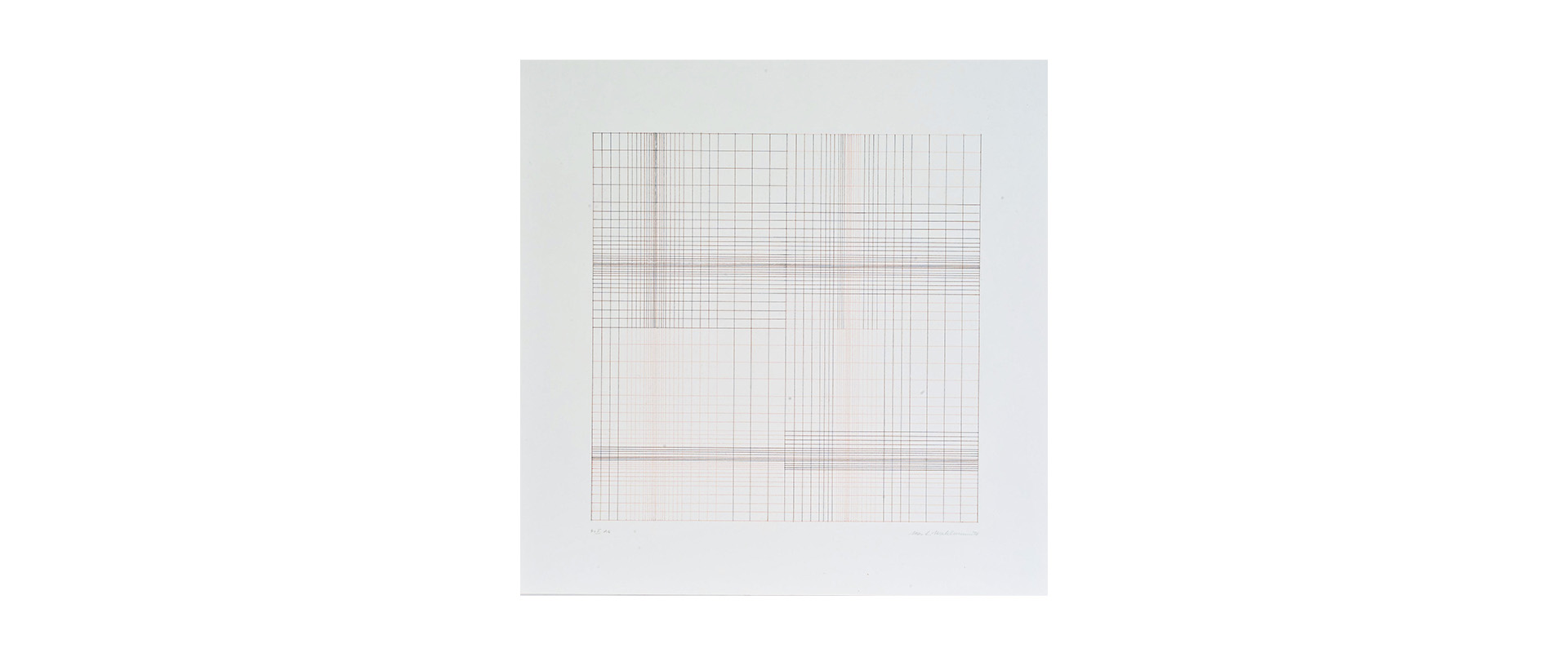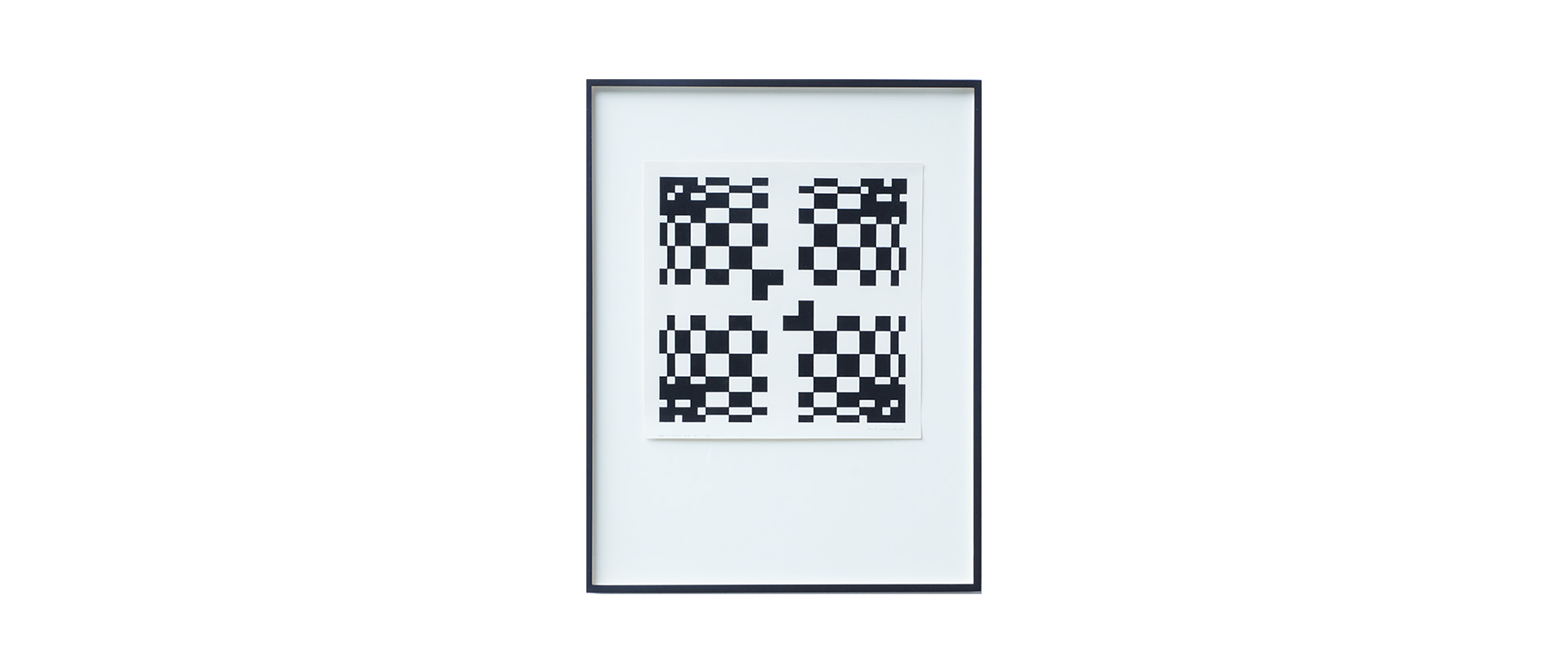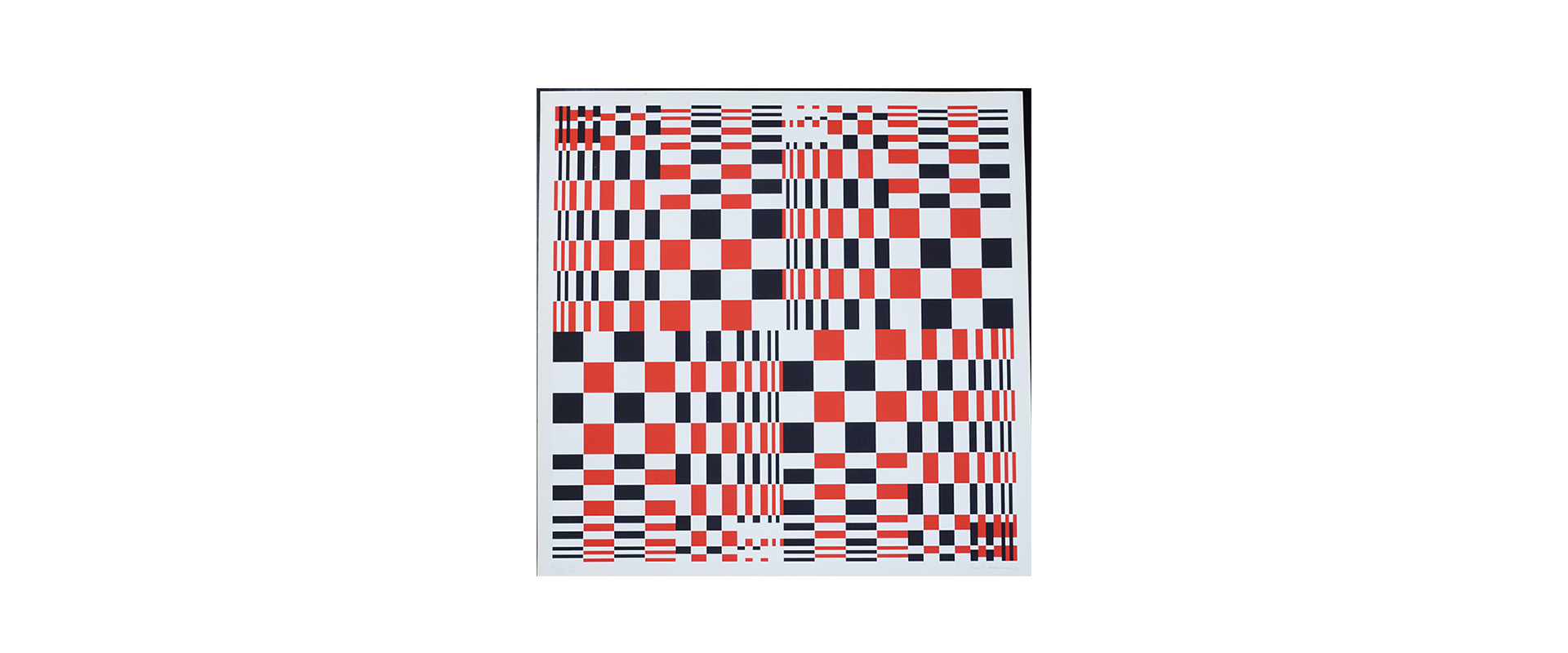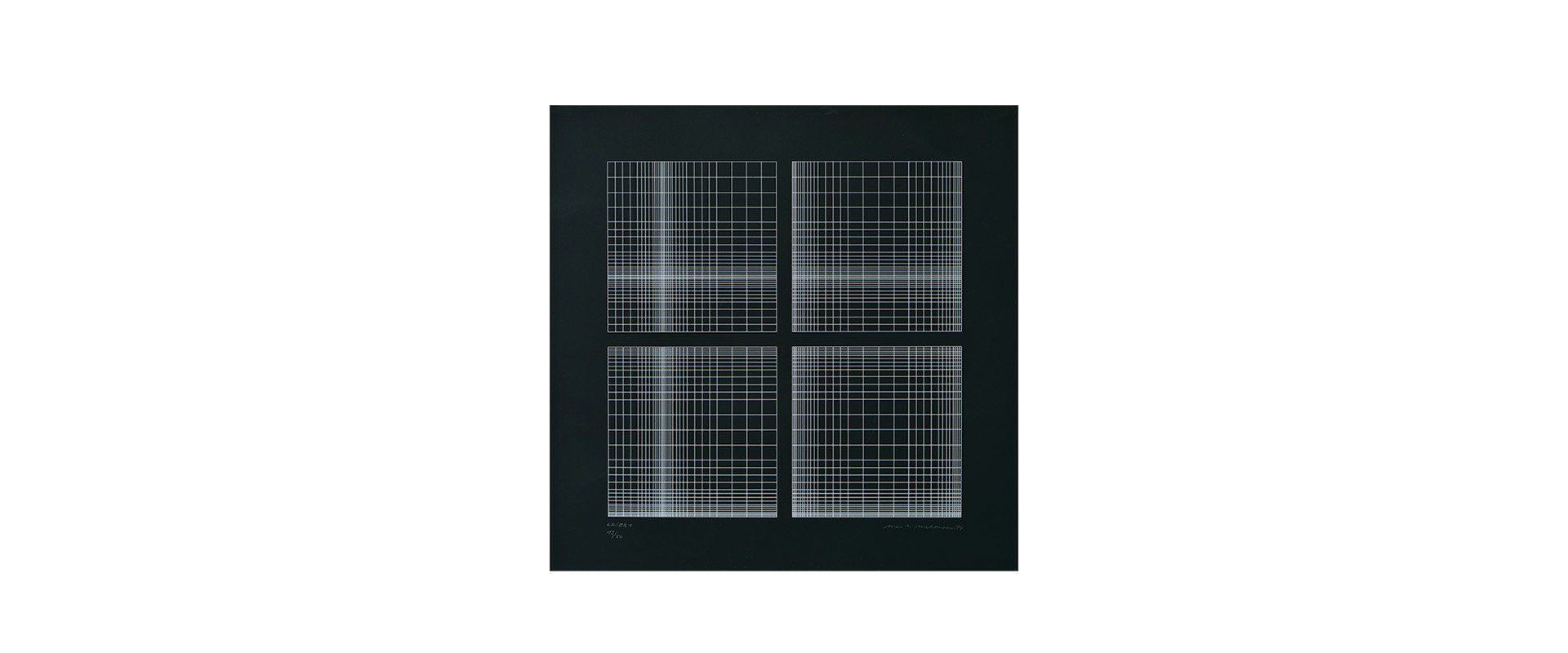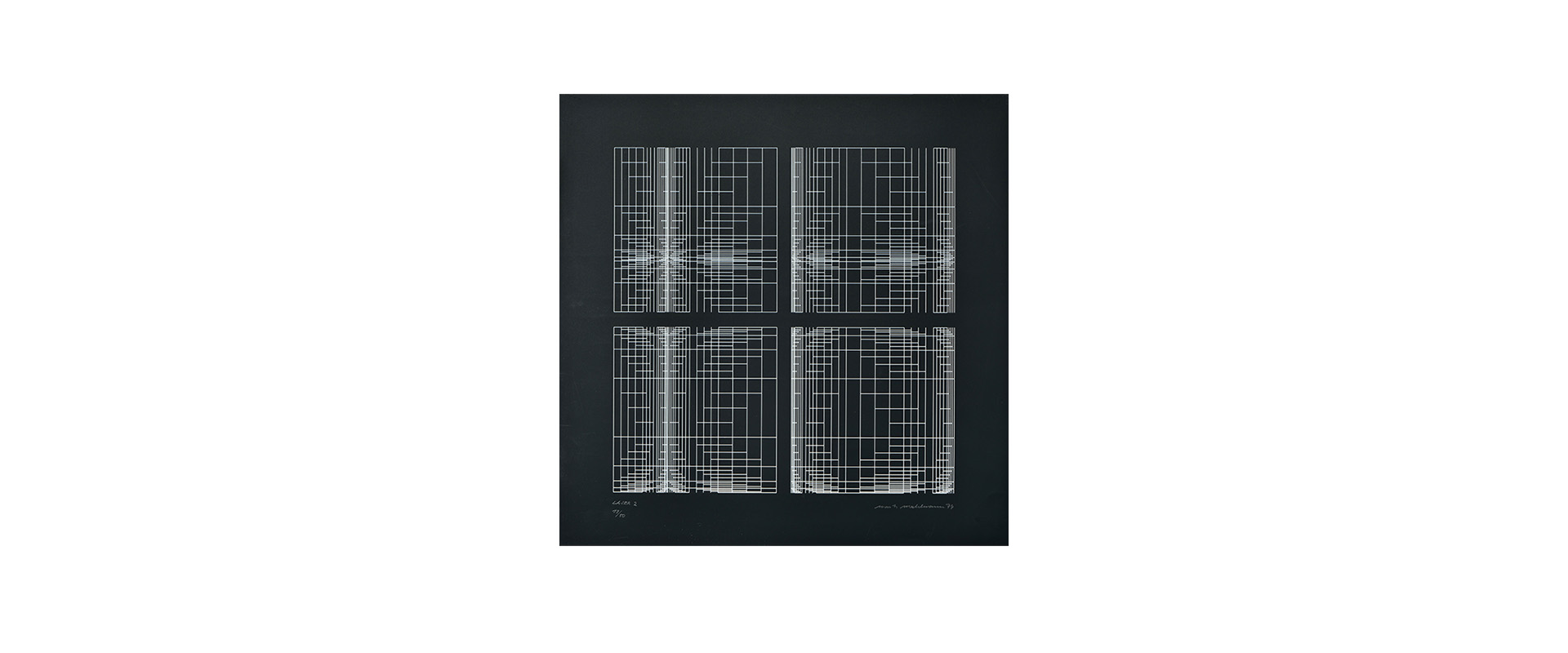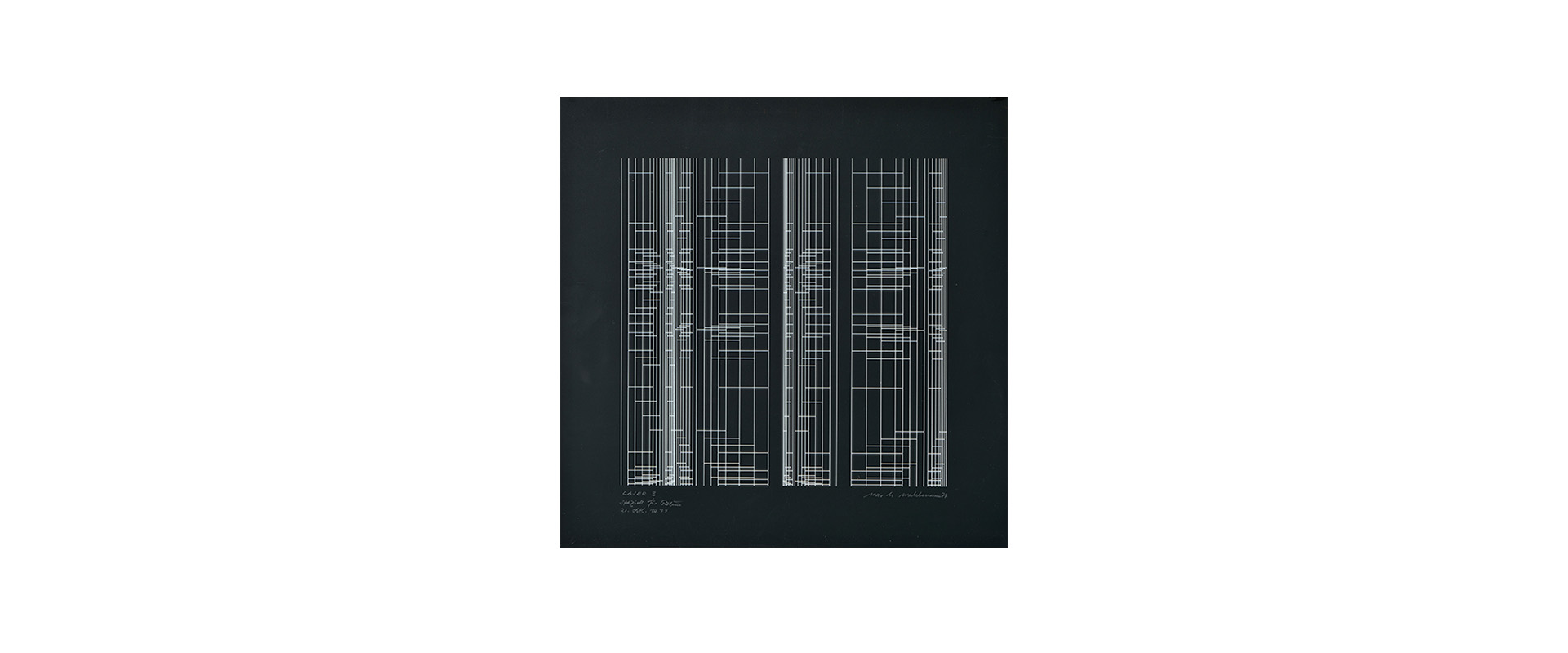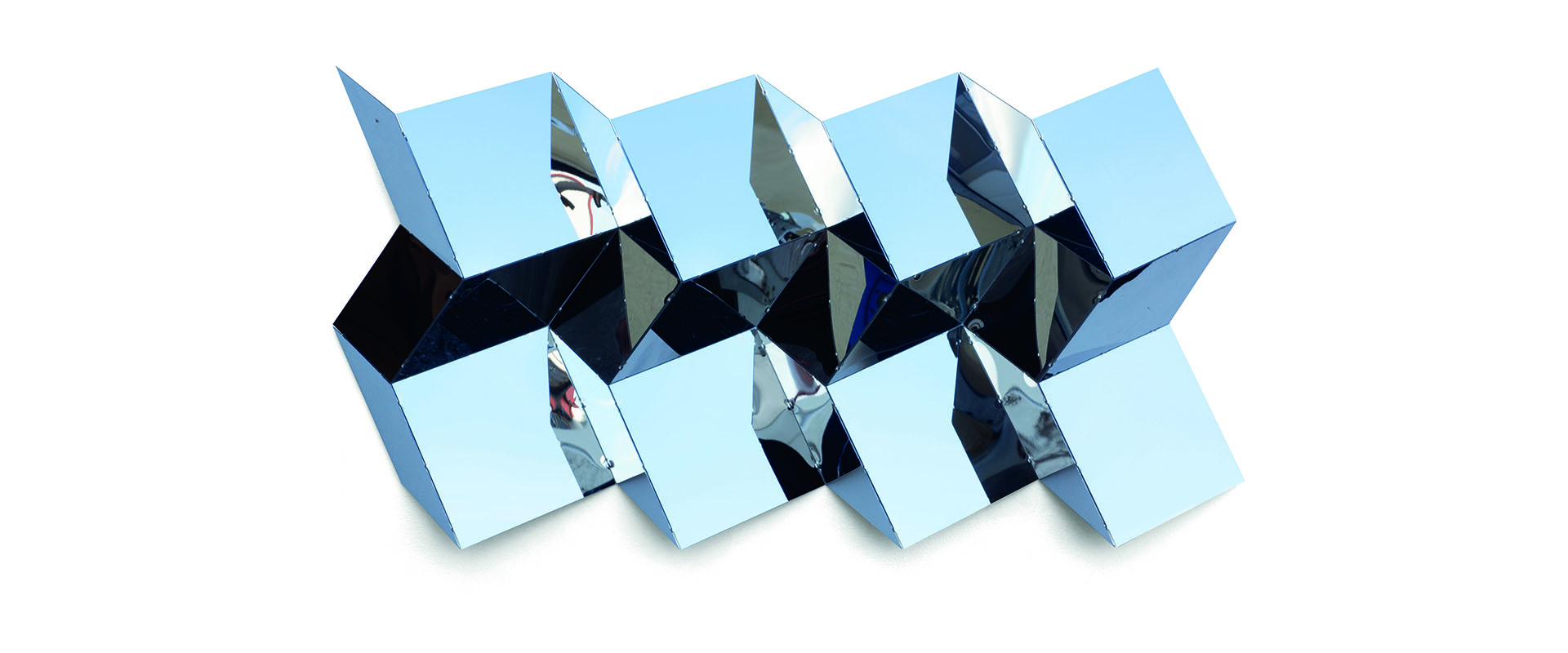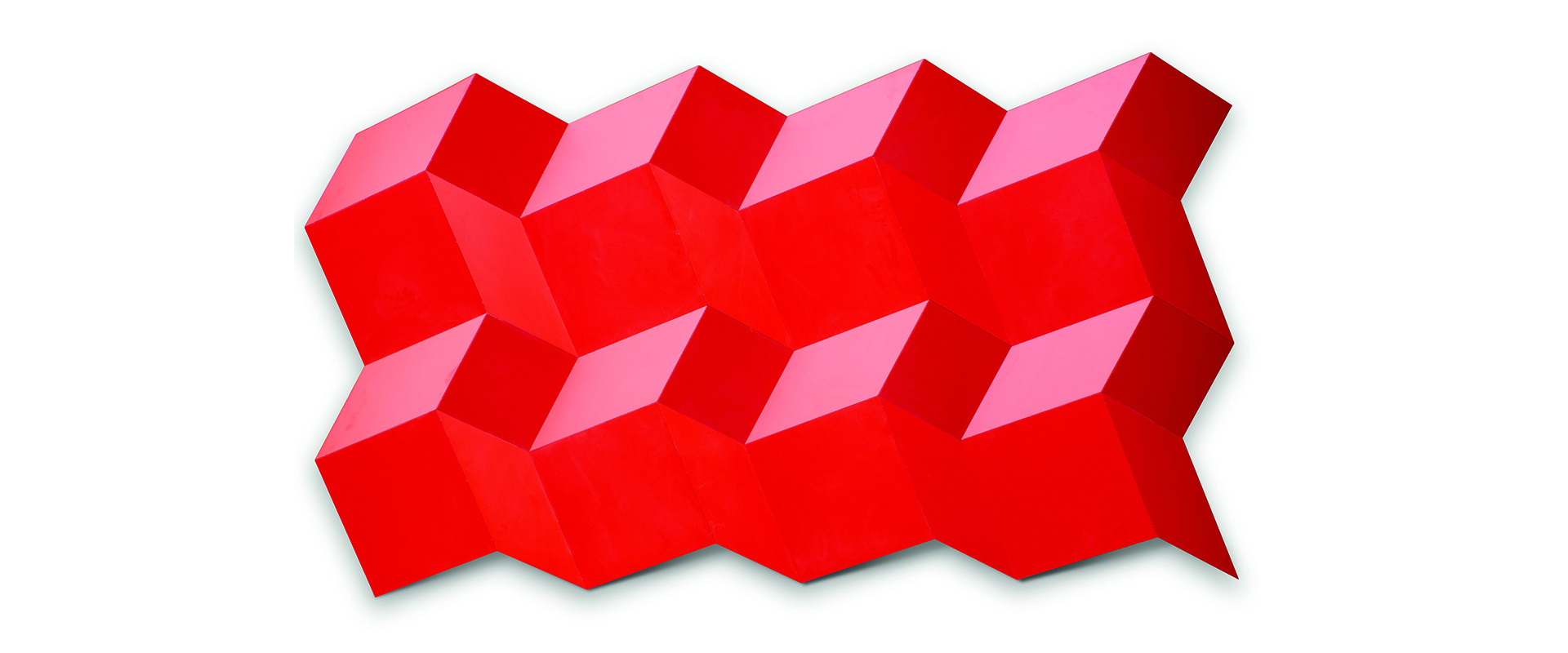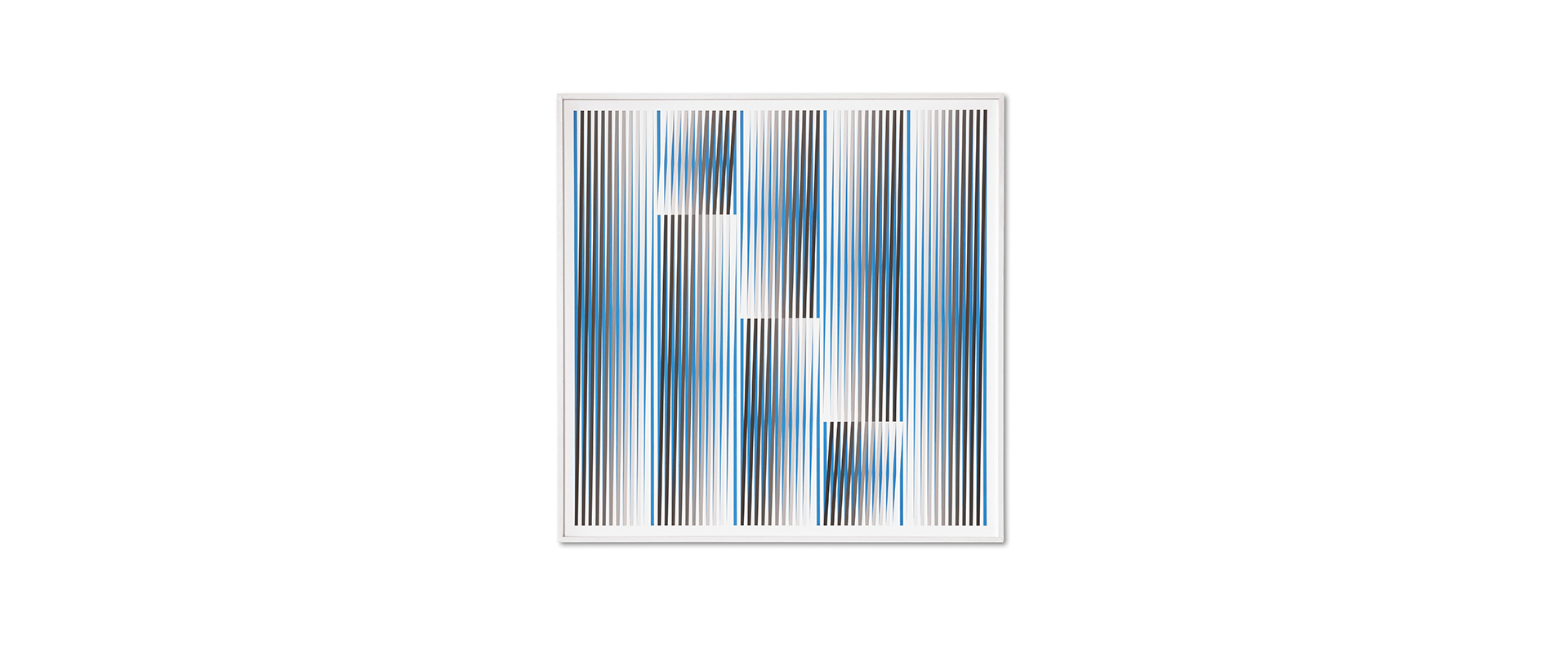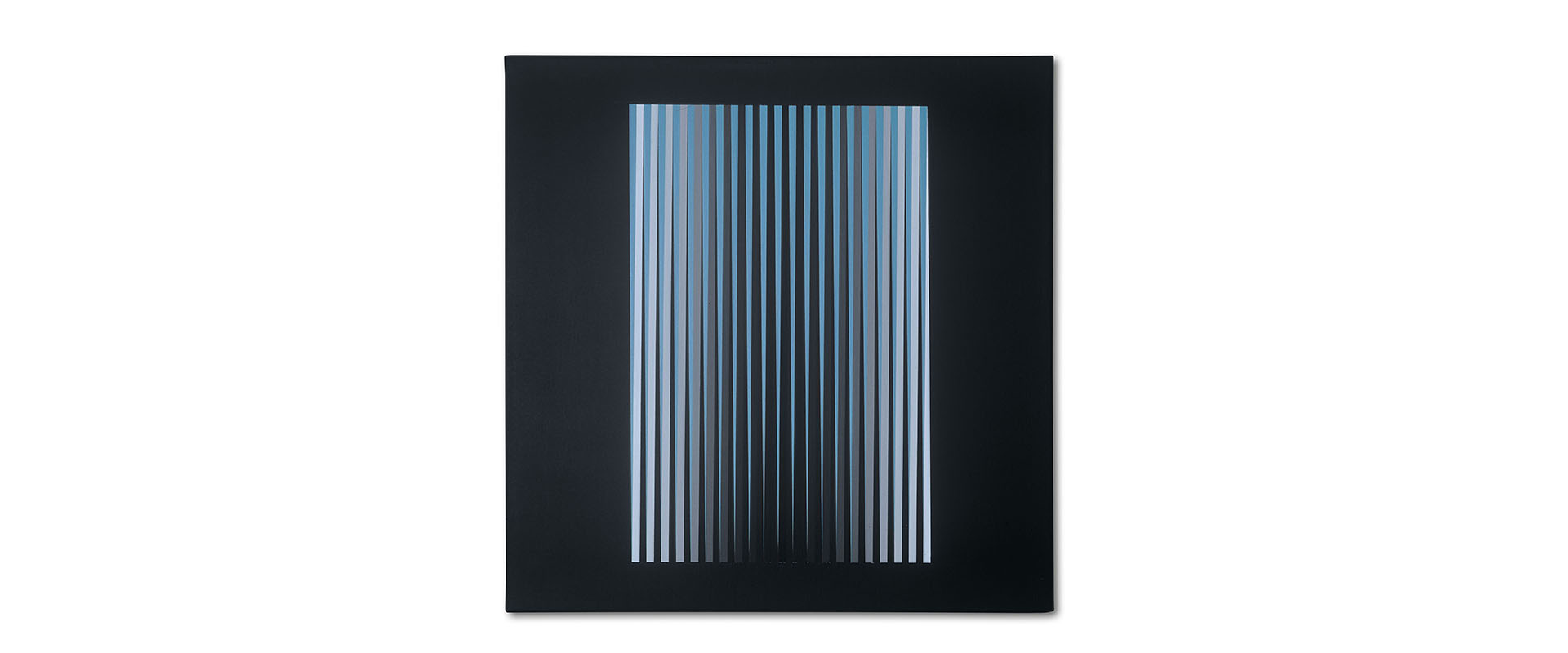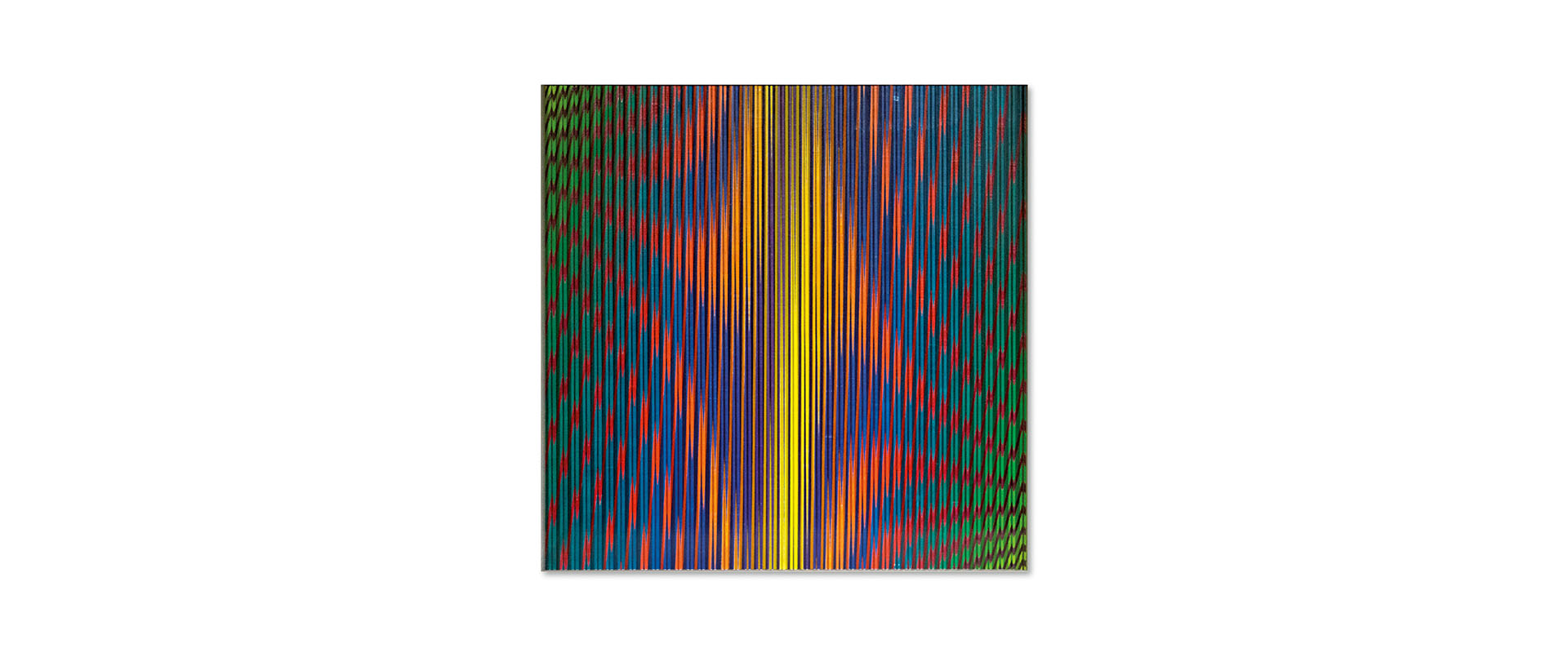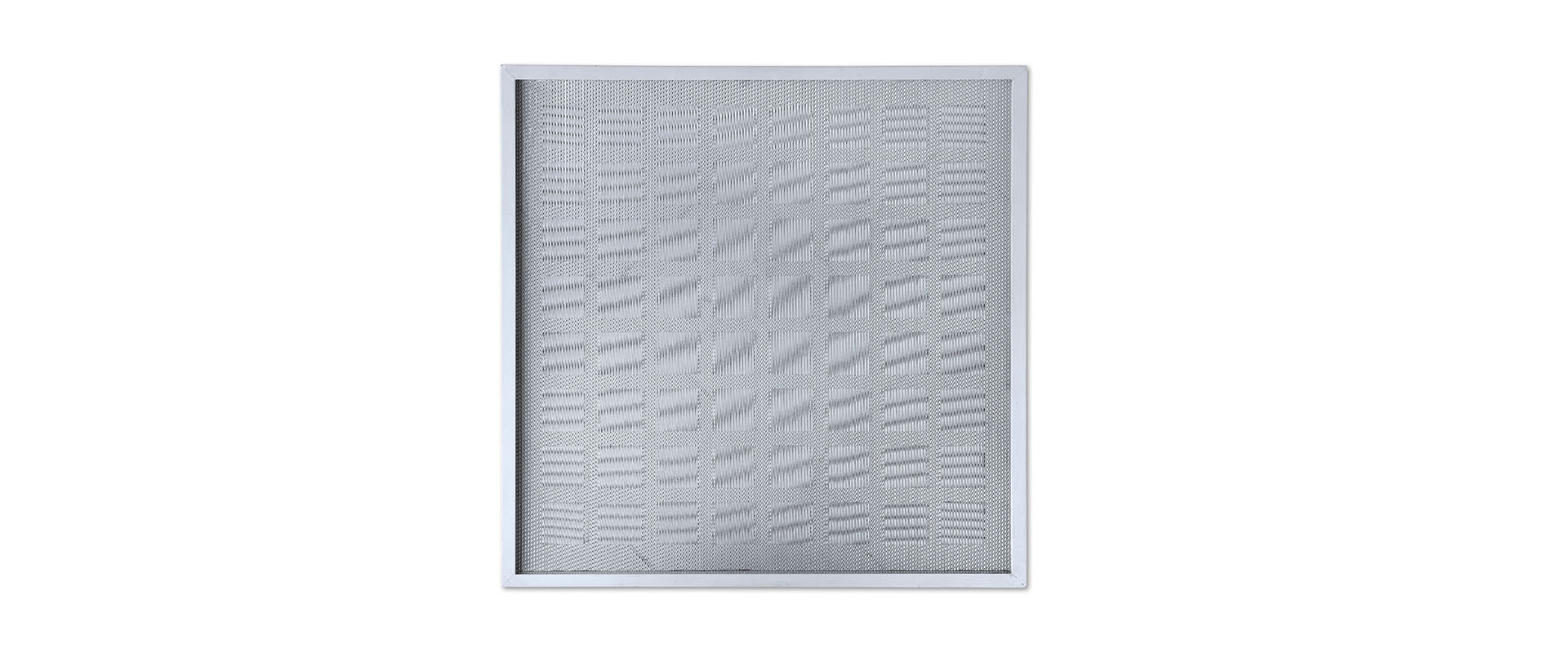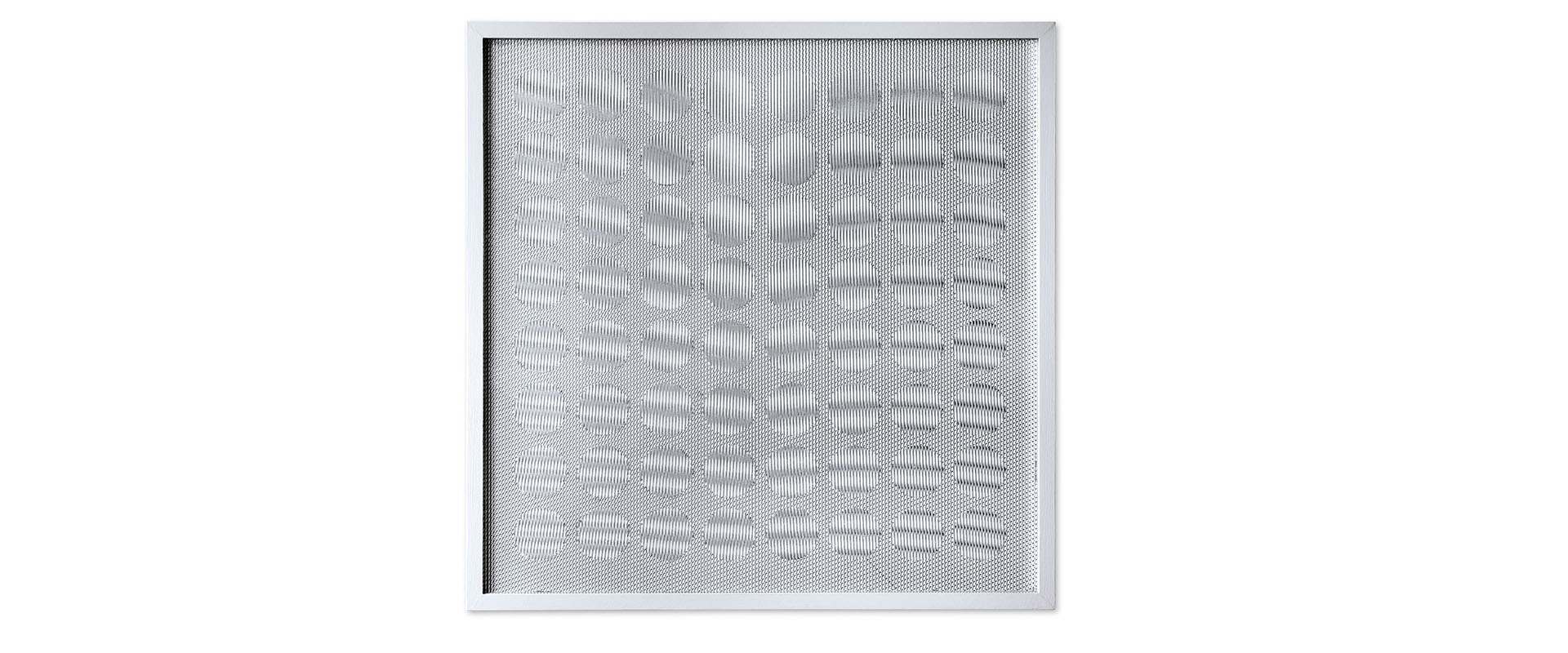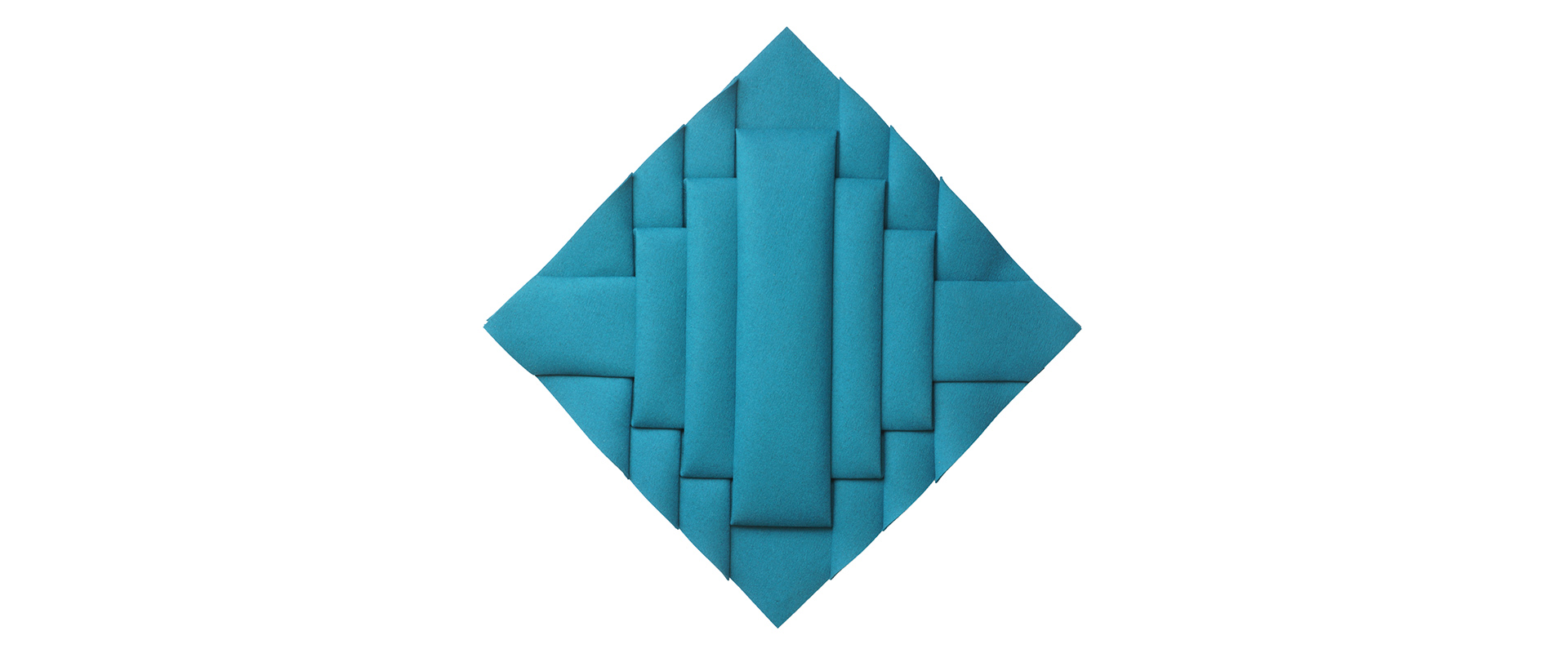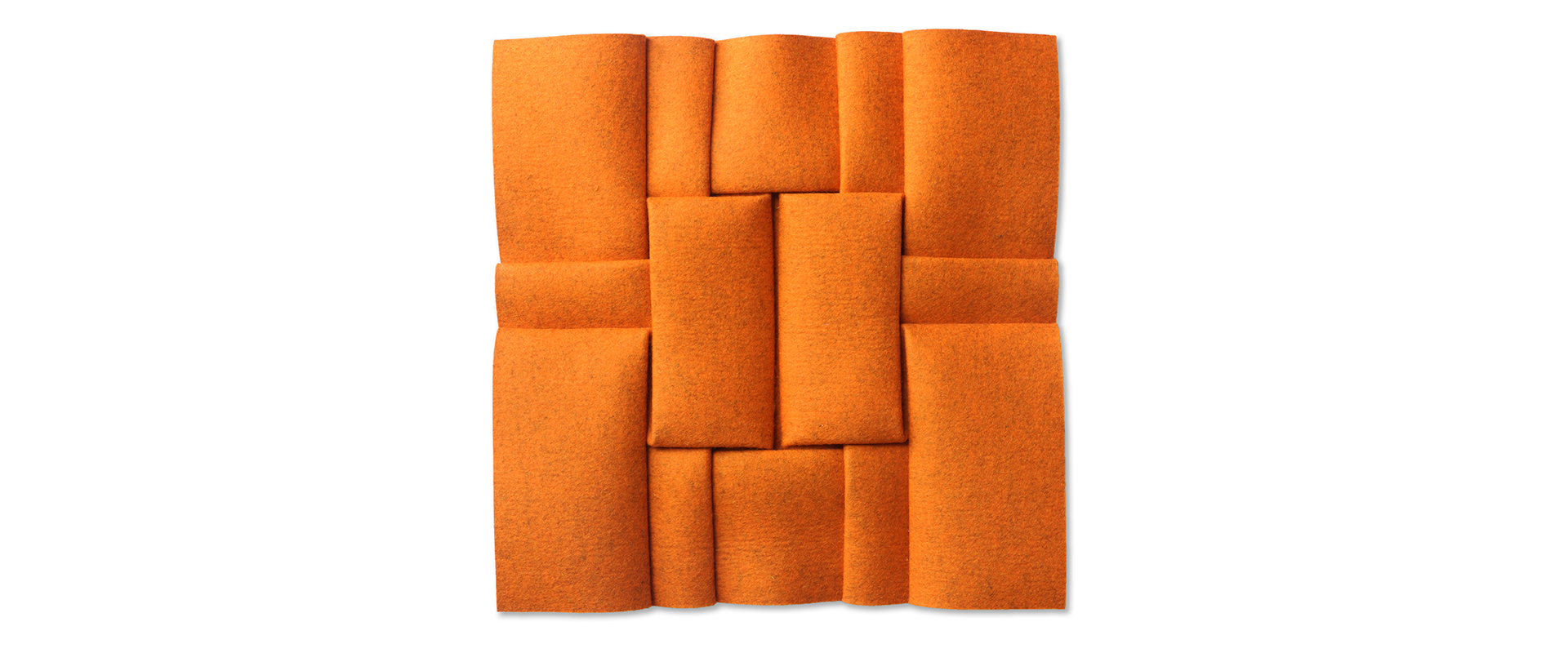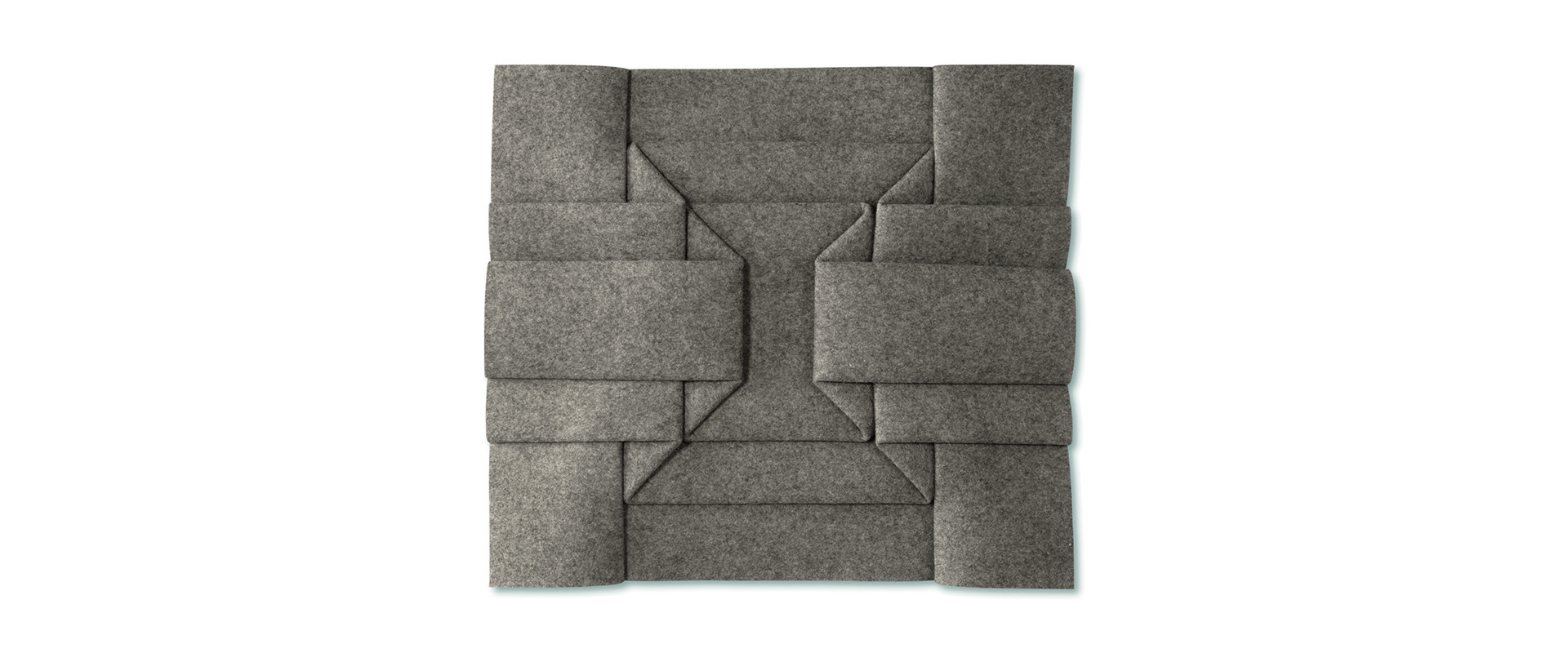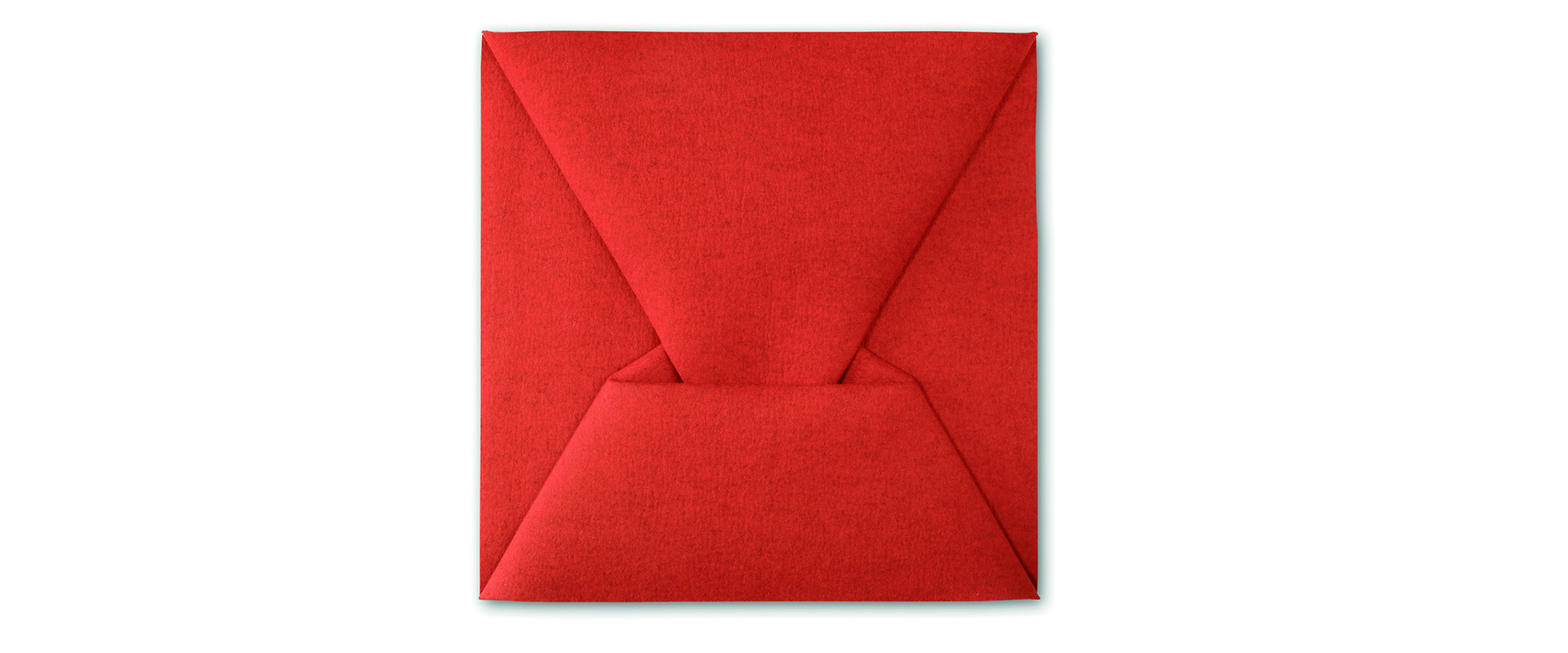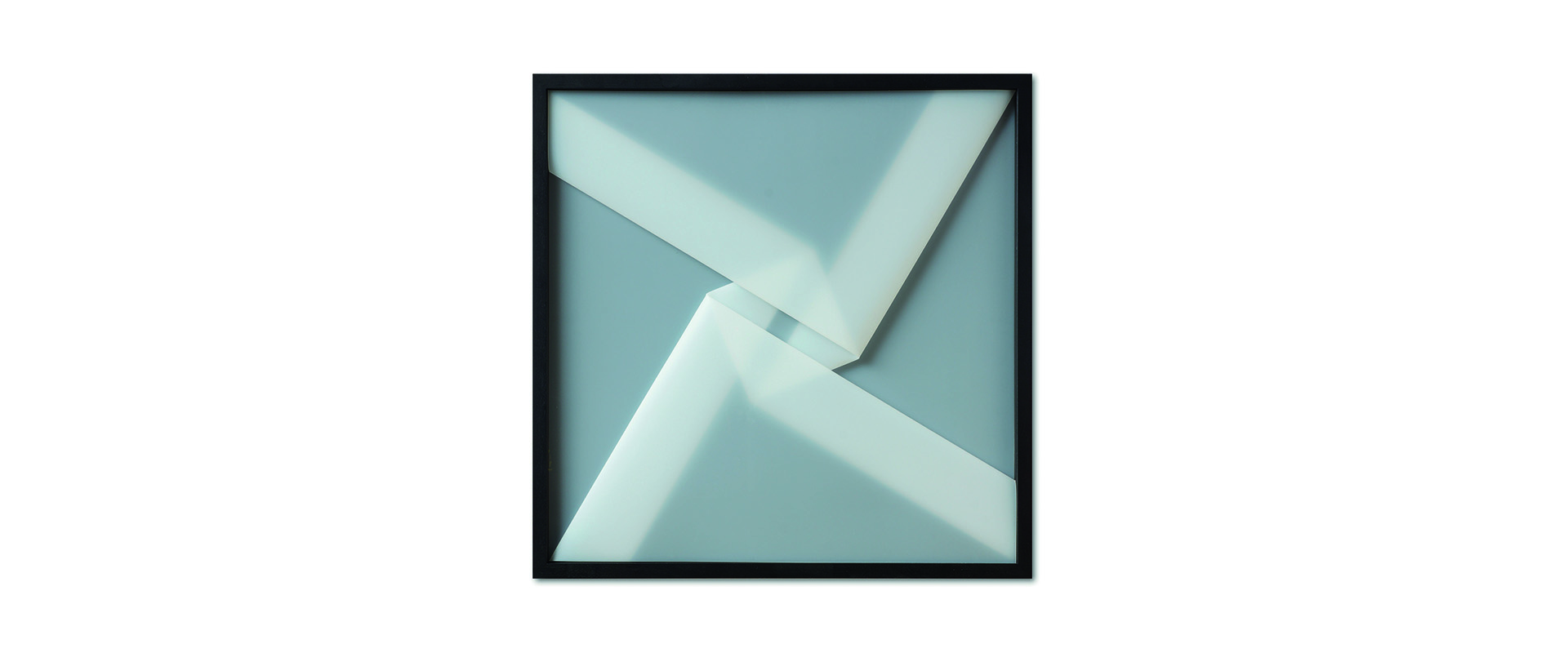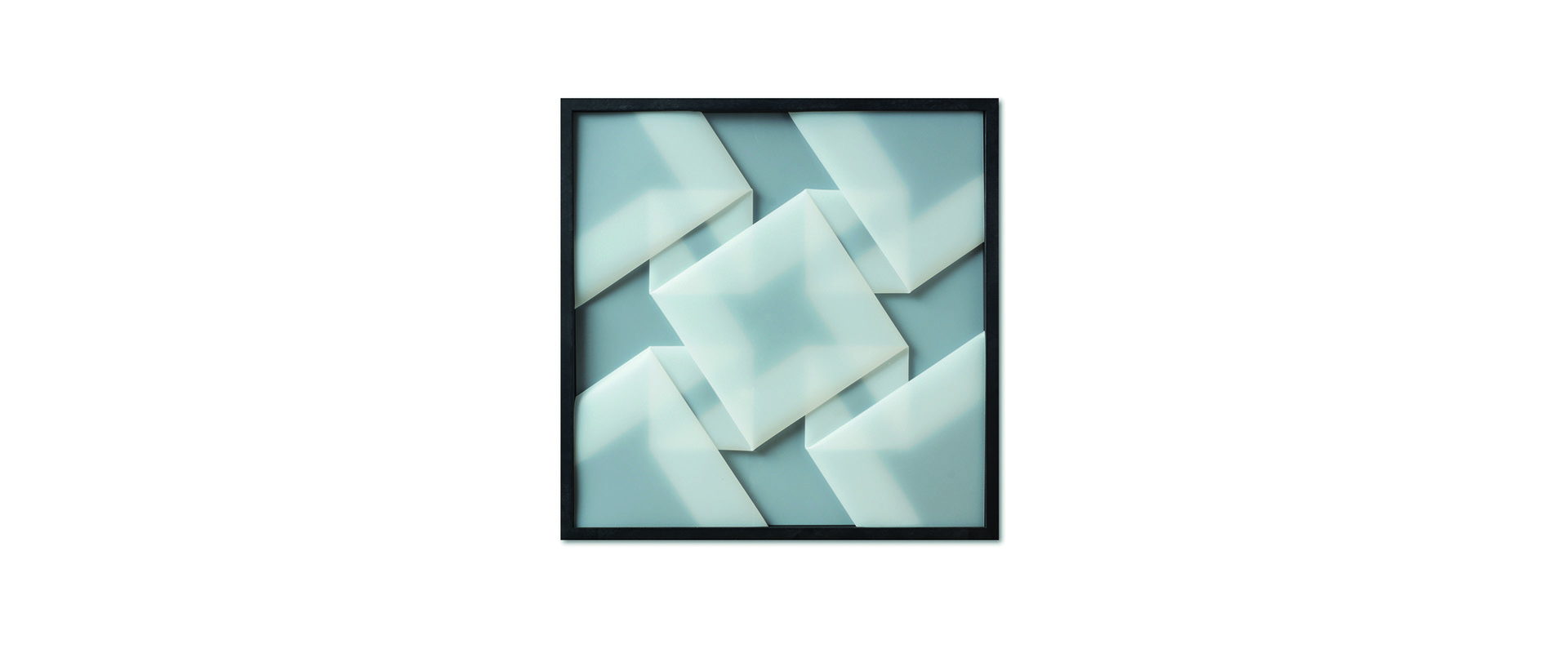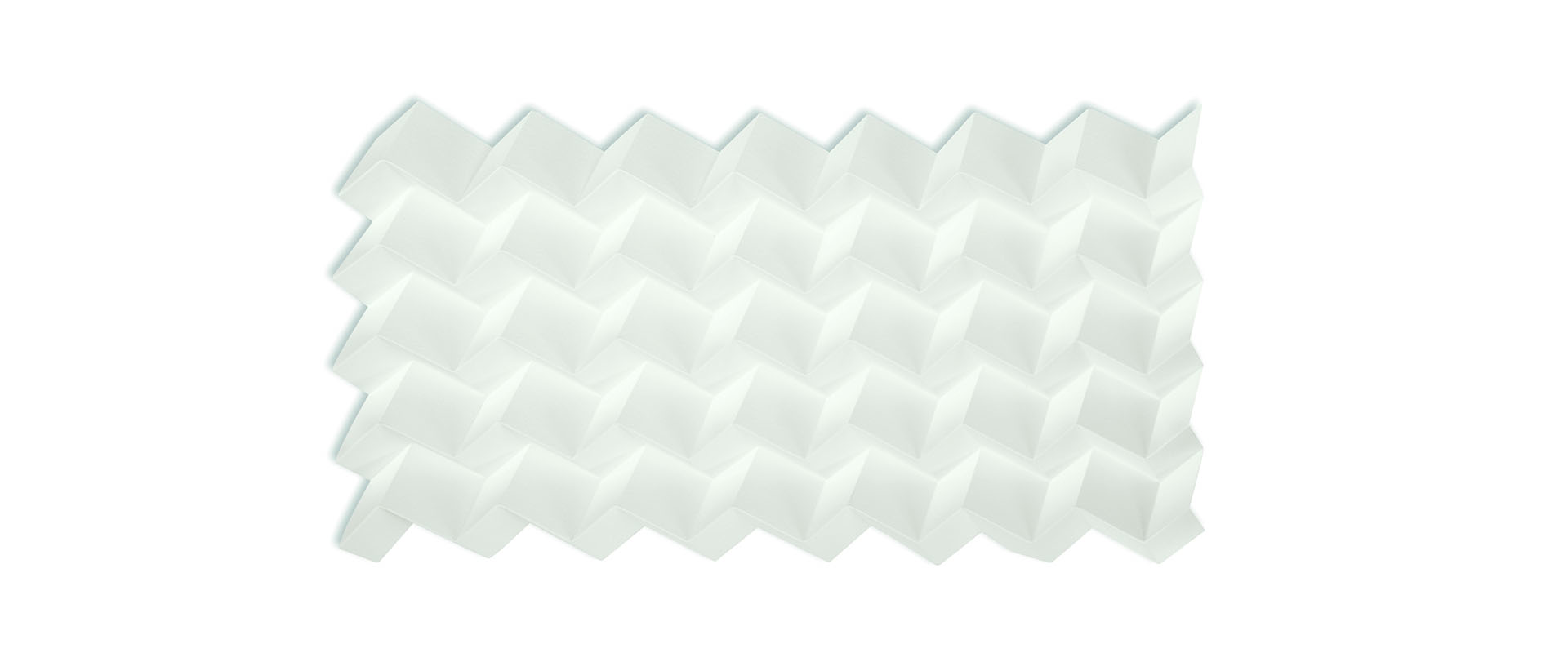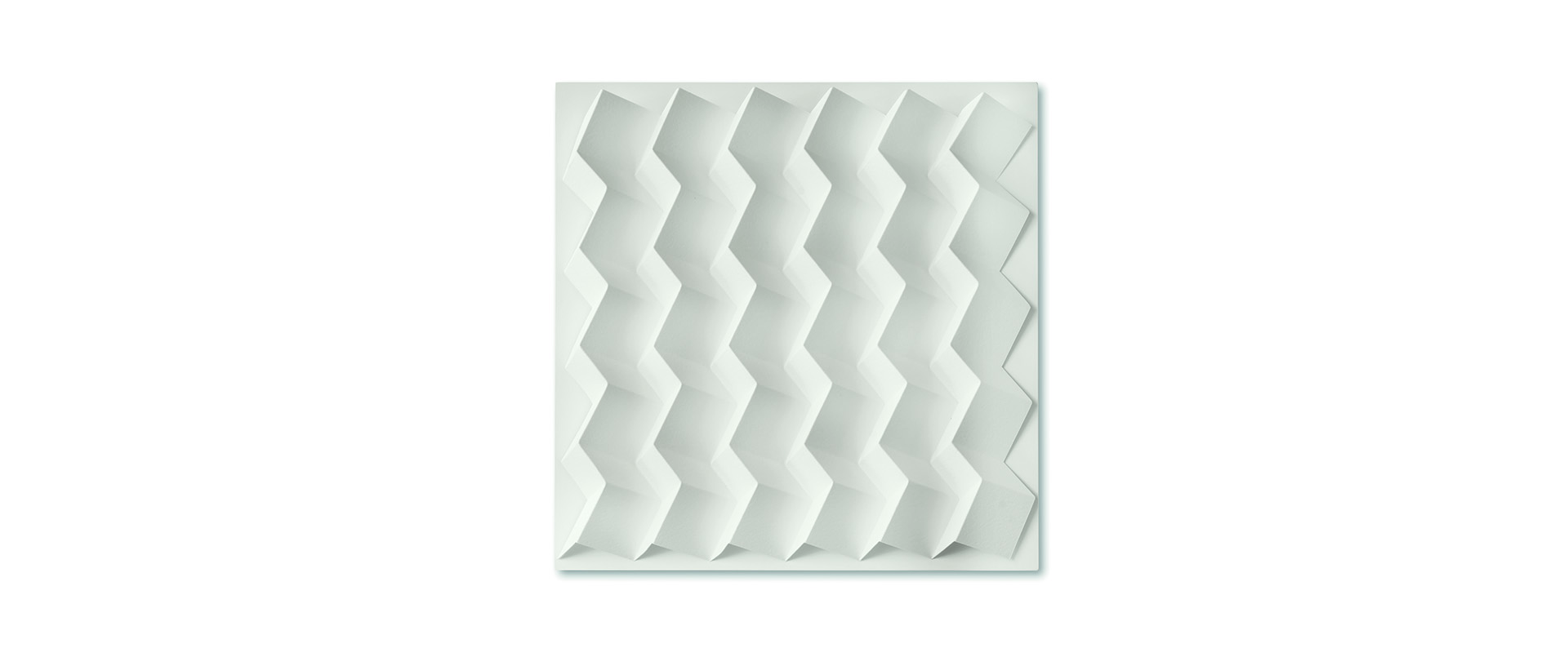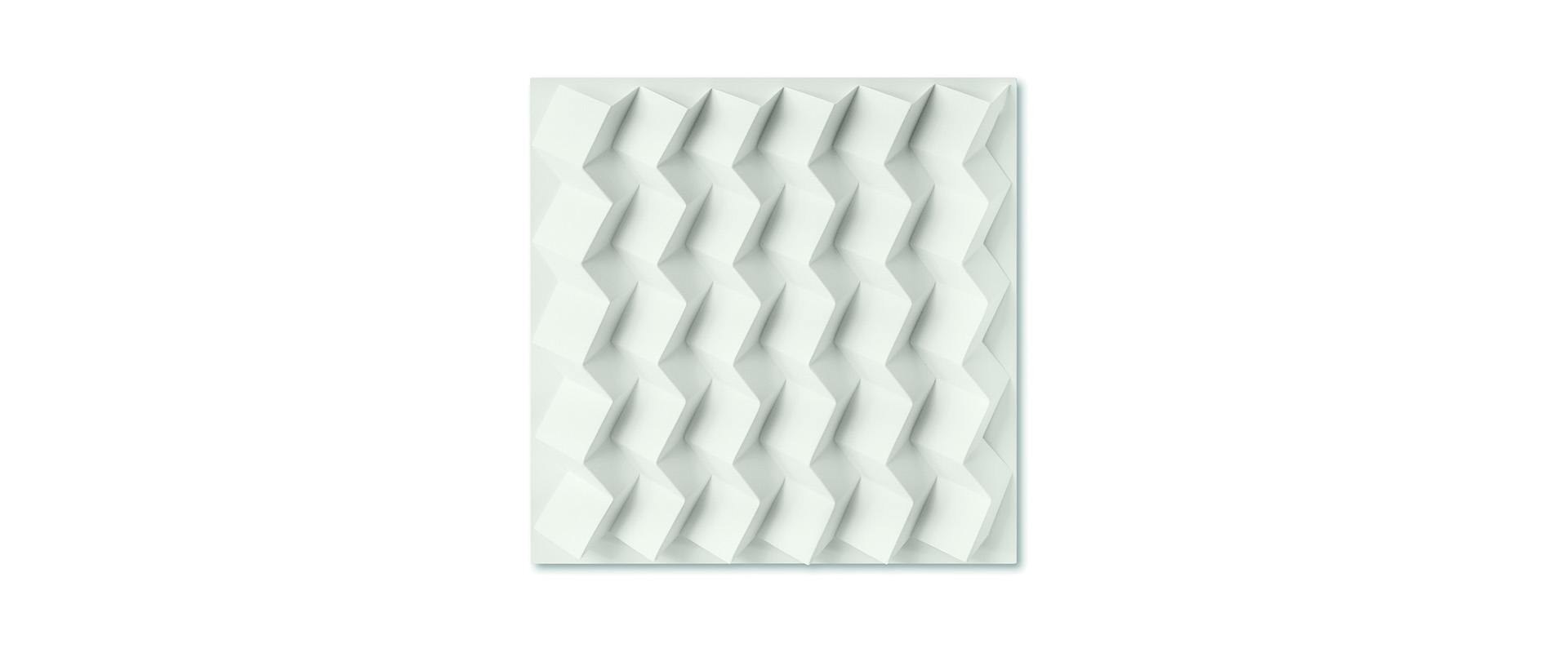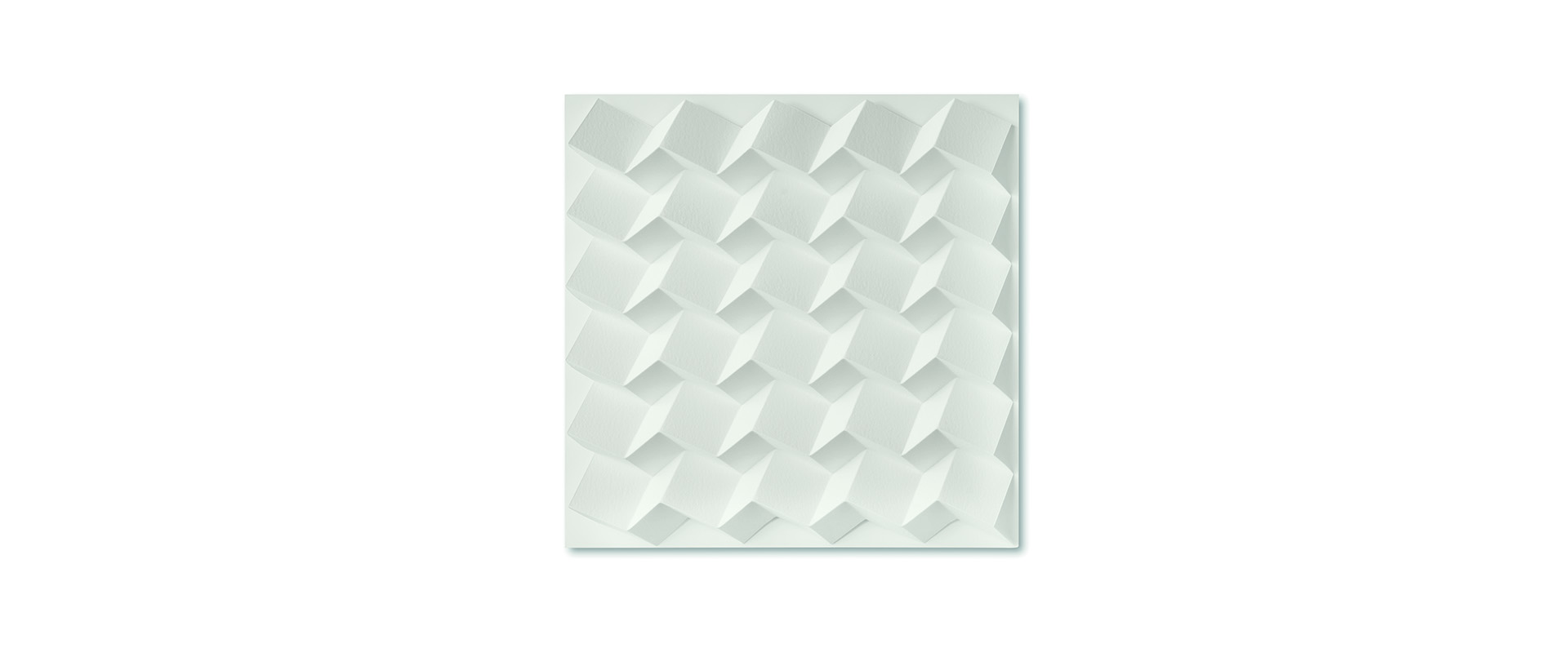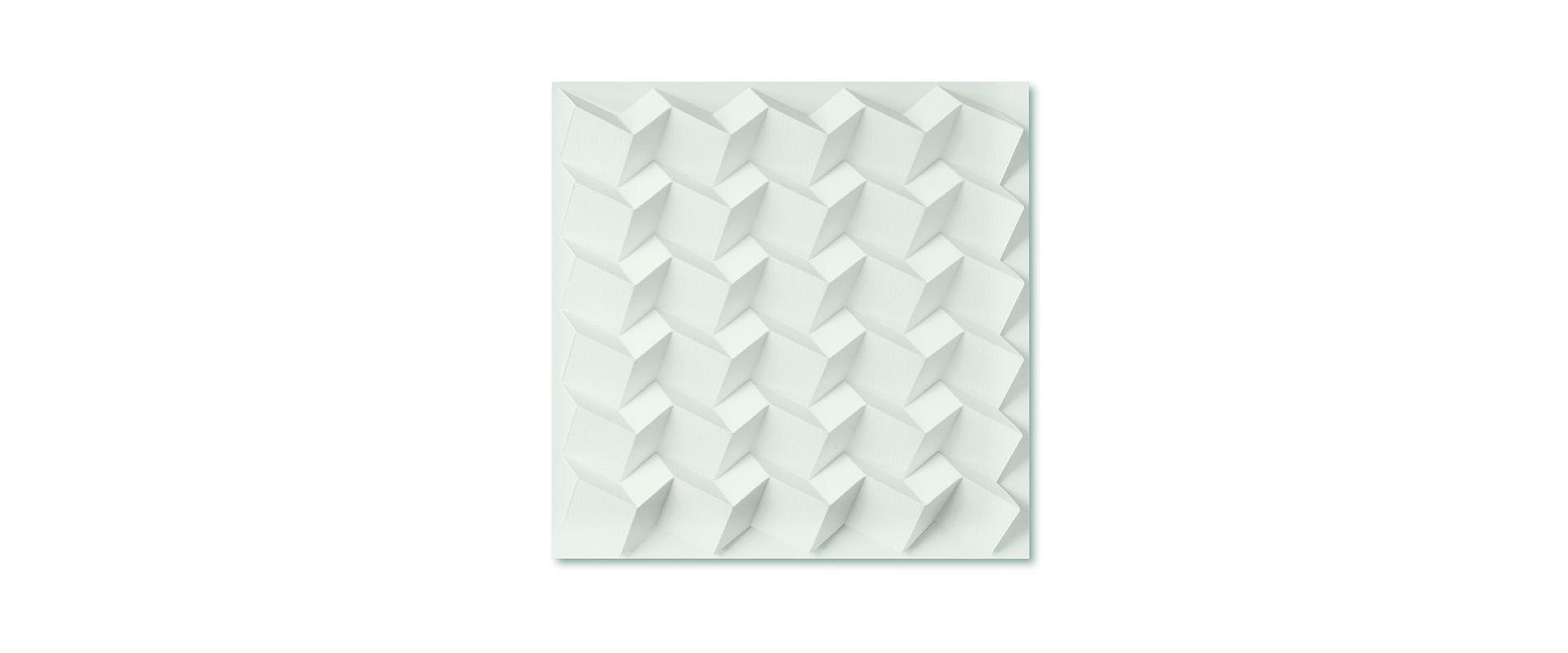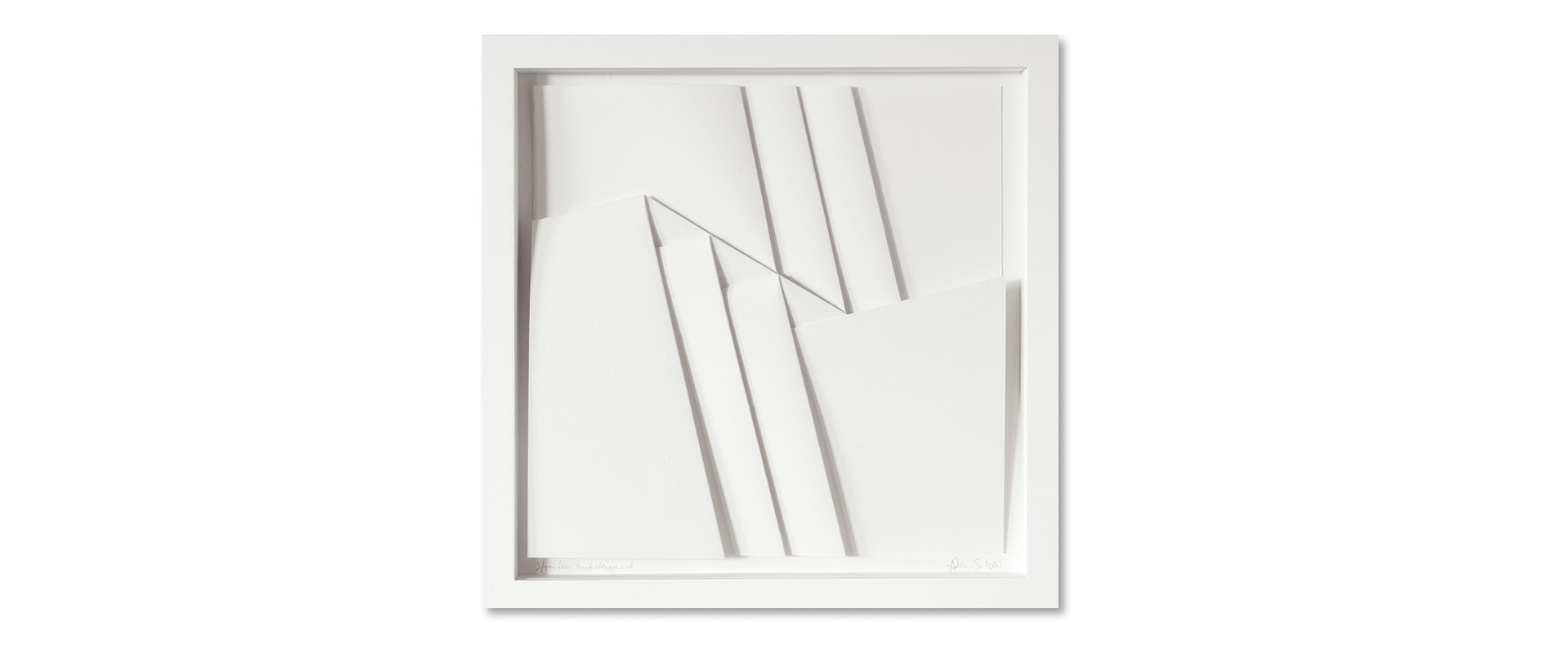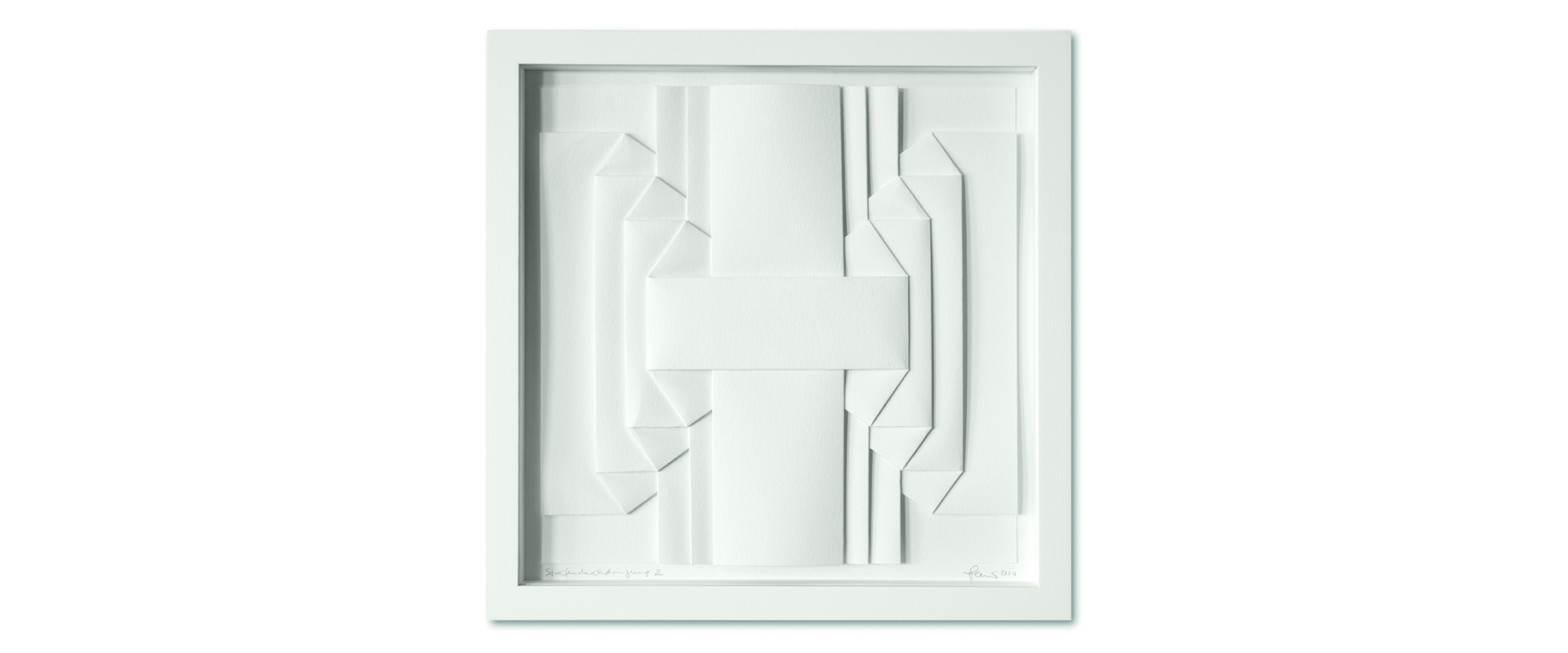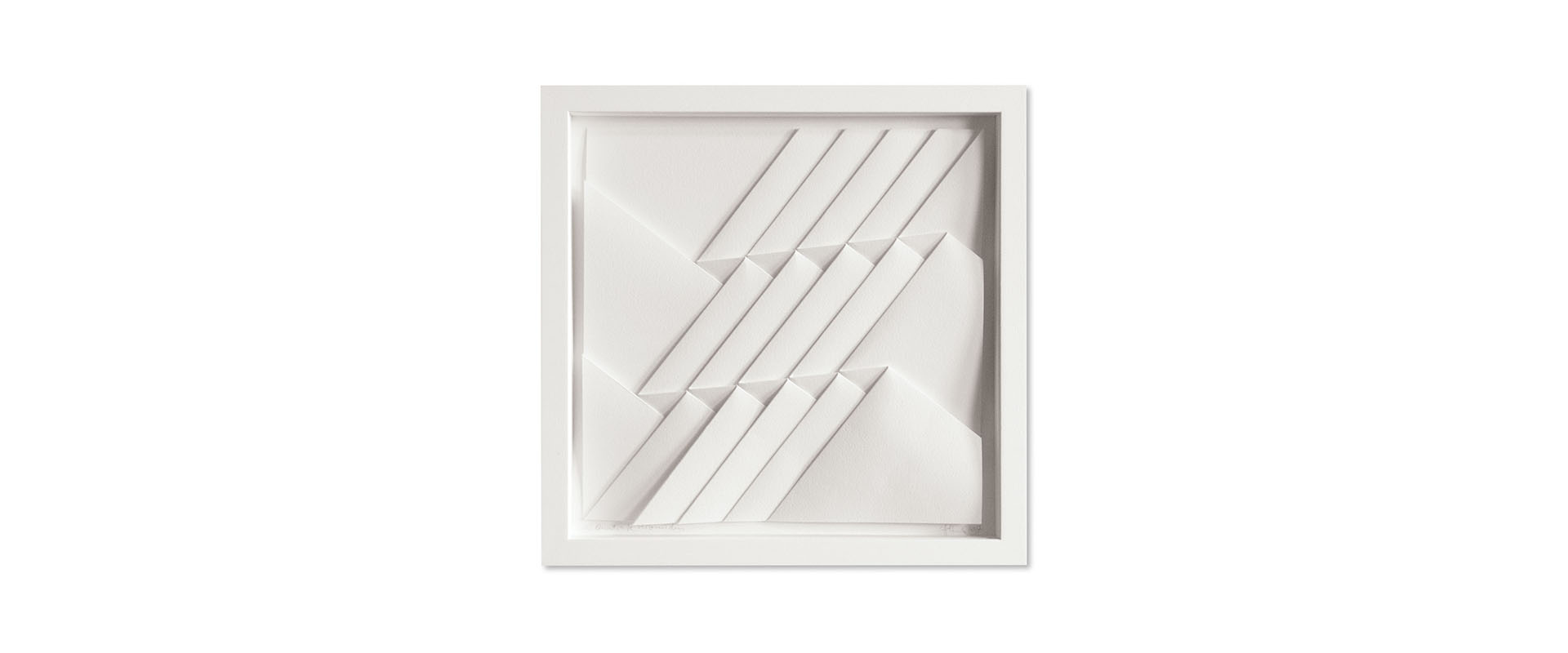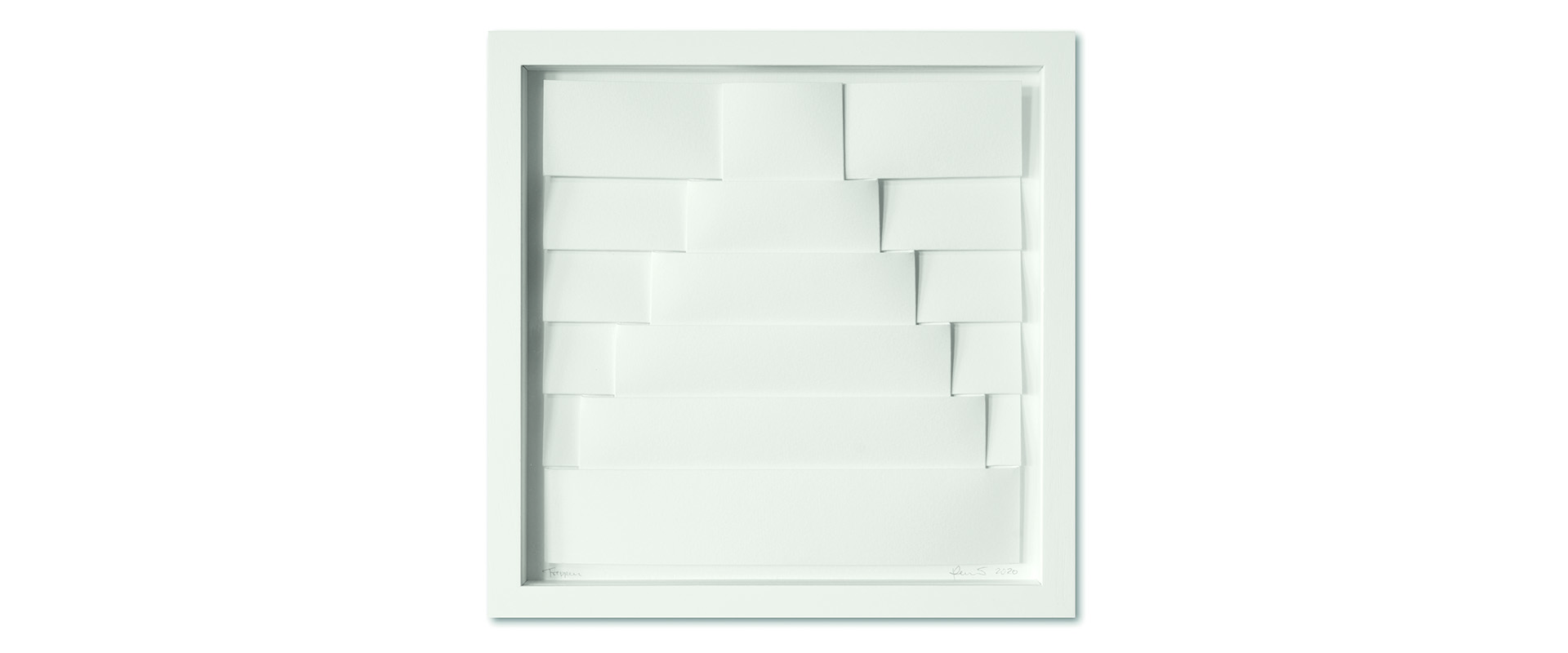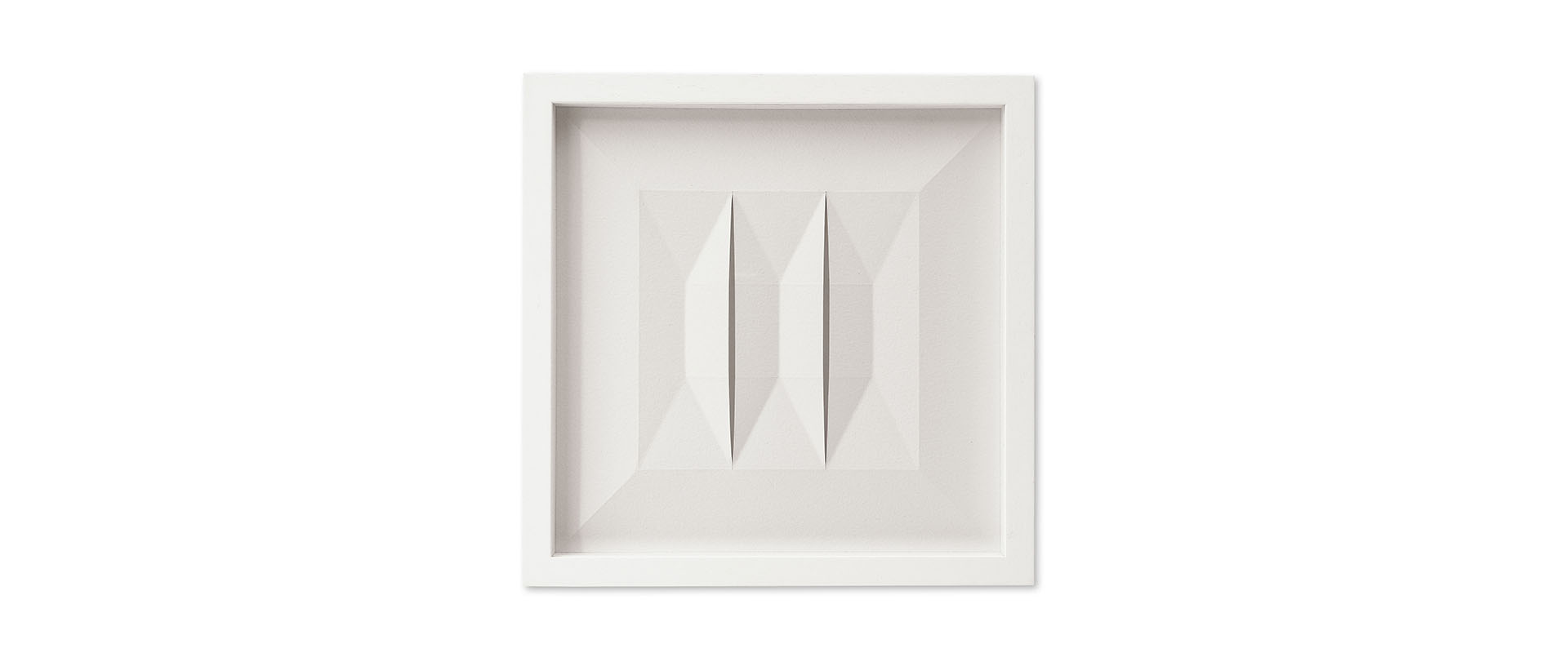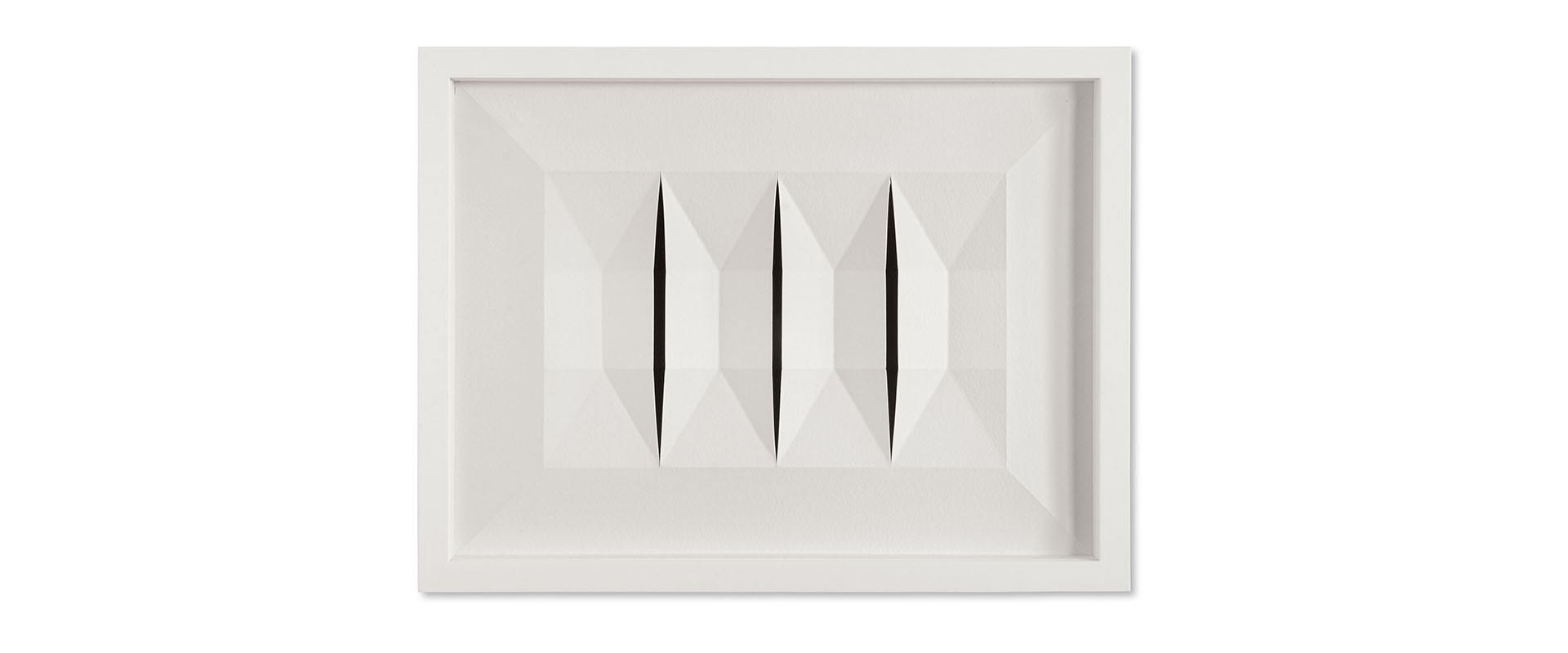Two Generations of Concrete Art
Max H. Mahlmann and Peter Weber
Exhibition at Galerie Renate Bender, Munich
April 19 to June 15, 2024
Opening: Friday, April 19, 2024, 6 to 8 pm
Matinee: Saturday, April 20, 2024, 12 to 4 pm
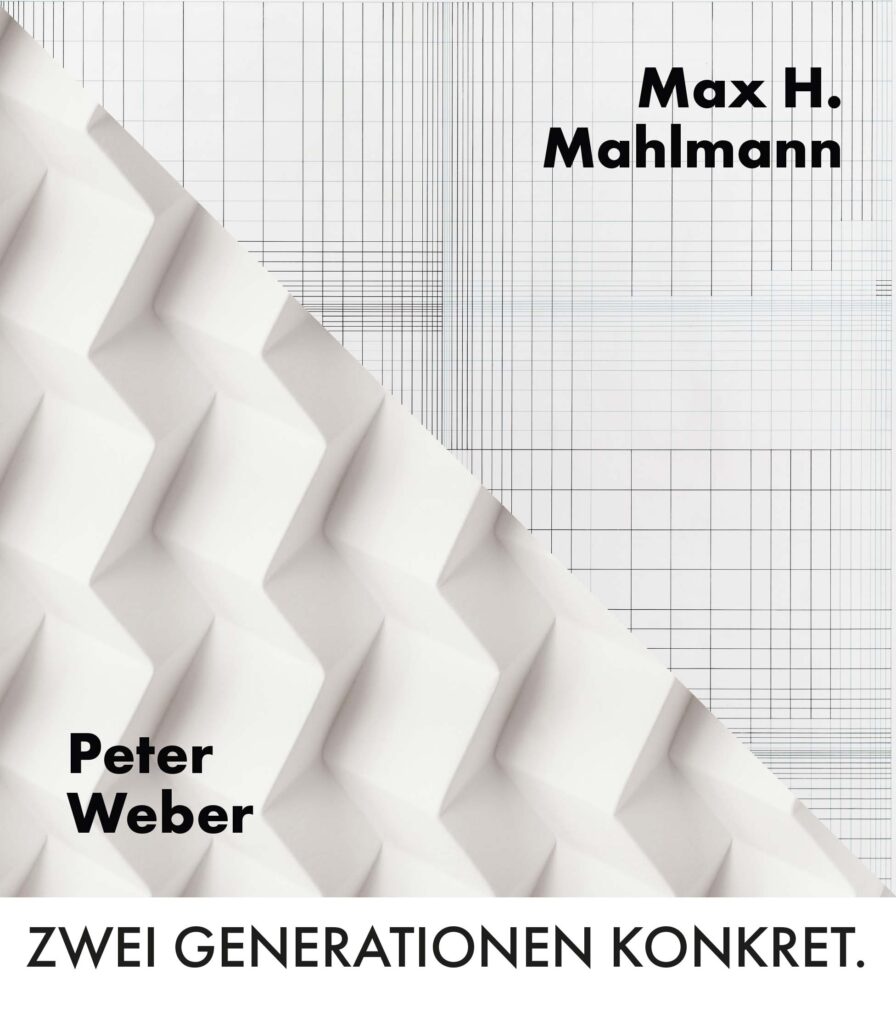
“If you continue like this, you’ll have to go to Mahlmann!” That was the recommendation of the instructor at the design department of the academy in Hamburg that Peter Weber had been attending since 1969. Without doubt this laid out the path for the young artist, who was warmly accepted into Max H. Mahlmann’s circle. Here students were not simply “listeners;” rather they belonged to an “inner circle” that surrounded the talented painter and mentor. Mahlmann did not lecture; he gave his students the freedom to develop on their own, offering tactful suggestions for their artistic development. The friendship between the “young” student and the “old” artist was to last to the end of Mahlmann’s life. And thus it seemed logical that for our first project on the theme “Zwei Generationen konkret” (Two Generations of Concrete Art”) the work of Max H. Mahlmann and Peter Weber would open the gallery’s exhibition with this new focus.
Peter Weber’s uninterrupted contact to Mahlmann’s family, especially to his daughter Maria Mahlmann, enabled us to draw on a wonderful collection of works by the Hamburg Concrete Artist and to present a small but excellent exhibition, for which we extend our appreciative thanks to Maria Mahlmann.
Renate Bender
February 2024
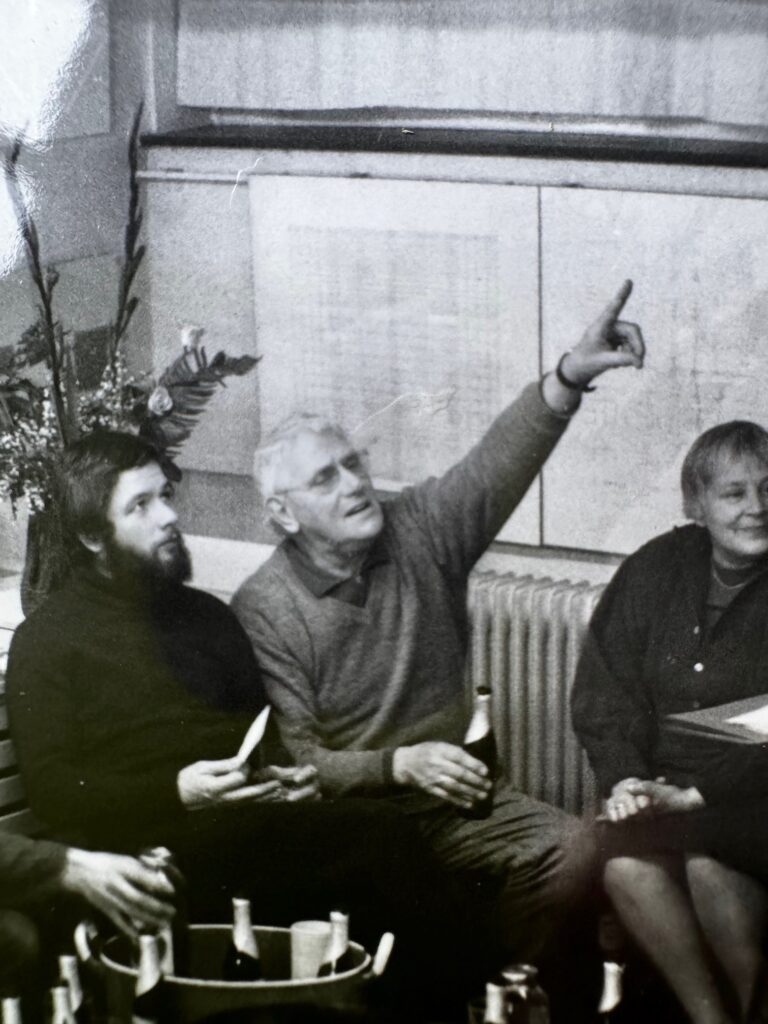
Peter Weber, Max H. Mahlmann and Gudrun Piper, March 10th, 1976
“The conceptual goal of geometric design is commensurate with our technological age. With this experience, mankind envisions a new humanity.”
Max. H. Mahlmann
“The idea of various folding “states” gained more and more importance in all of my folding experiments and my discovery of the most diverse materials. In the working process, architectonic constructions arise…these “states” that appear in the middle of the folding process were not shown to the public before 2017.”
Peter Weber
Max H. Mahlmann was born in 1912 in Hamburg, Germany. He died in 2000 in Wedel, Germany.
In his works Max Hermann Mahlmann, who studied at the Akademie der bildenden Künste in Dresden (Dresden Academy of Fine Arts), strove for clarity and transparency. In 1949 he initially focused on Constructivism and, ten years later, created his first white reliefs.
In the 1960s he developed a methodological basis for his geometrical designs, which culminated in so-called “super structures” emerging from underlying grids.
In 1968 he developed ideas for what he called “programmed designs”, which he understood as a further development of Constructivism. As of 1970, his work featured grid structures that were continuously expanded and developed. In these images, the starting point is a basic grid that is controlled by a centralized or decentralized network of coordinates. Lines, surfaces and three-dimensional forms arise, and “color is assigned according to theoretical principles” (MHM). Aesthetic freedom is achieved through variation, dissolution and contraction that is always recognizable, not least by the title, which can provide, for example, the distance between the lines in the underlying grid. In their formal reduction they are poetic images. The grid drawings vibrate in those places where the configuration is dense, and they shift into zones of quiet harmony where the lines are further apart. Max H. Mahlmann developed a clear system with identifiable rules that has nevertheless produced unpredictable results and led to even more reduction in his late works.
Max H. Mahlmann was a skilled step dancer, mastered an overtone flute without instruction and was a charming and captivating conversationalist. He impressed and inspired his students not only those attending the Werkkunstschule Hamburg (now the University of Applied Science, Hamburg), where he taught for almost 20 years, but also numerous other artists who, in many cases, maintained a life-long friendship with him. Max H. Mahlmann received numerous awards, including, in 1995 the Bundesverdienstkreuz am Bande (Order of Merit of the Federal Republic of Germany).
Peter Weber, born 1944 in Kollmar/Elbe, Germany. He lives and works near Munich, Germany.
The artist’s path from painting in the early 1970s to his present-day foldings is characterized by a relentless investigation and struggle with mathematical-geometrical specifications, by the resulting strict formality of his work and by his ability to implement these conceptual parameters in complex groups of works using his “manual understanding” as Eugen Gomringer once referred to it.
Pictures from the group “Interferenzstufungen” (“Interference Gradations”) of 1976/77 reveal in exemplary manner how Peter Weber remembers Mahlmann’s ingeniously employed grid structures. From the start, however, Peter Weber expanded and developed them into a completely different geometrical system.
The complex foldings and different folding states that the artist has discovered and developed since then arose, as is so often the case in artistic endeavors, by chance. As an instructor at the academy in Hamburg, Peter Weber designed together with his students an invitation to a group exhibition in the form of a folded card. It was received with such enthusiasm that it encouraged him to explore folding systems. Created in canvas, his first folded works were shown by the artist in two different states of both the front and reverse sides: folded and opened. Folding became his medium of choice and in the end led to Peter Weber’s devoting himself entirely to folding. Initially, paper and canvas were his main material, followed by translucent HDPE, a highly dense polyethylene.
Paper has always been one of his most important materials. For his particular purpose Weber soon discovered that a 640-gram water color paper would remain stable throughout the folding process, enabling him to retain the folding states in their position, quasi as reliefs. The resulting objects, seemingly architectonic in character, combine precision and elegance in one artistic design.
And if that were not enough, Peter Weber has returned to steel, or rather stainless steel, which he had used in the early 1990s for some outside sculptures. However, because the material is unfoldable, it had to be cut with a laser and welded back together again.
The idea of a “folding state” has enabled him now to have the steel plates lasered by a specialized workshop according to drawings detailing the folds. Little bars that remain in the metal between the cuts and a simultaneously occurring folding technique that requires considerable strength and skill, actually enabled him to fold or bend the flat plates by himself.
A concrete idea carefully thought through, refined, expanded and executed over 50 years.
Max H. Mahlmann would have loved it!

